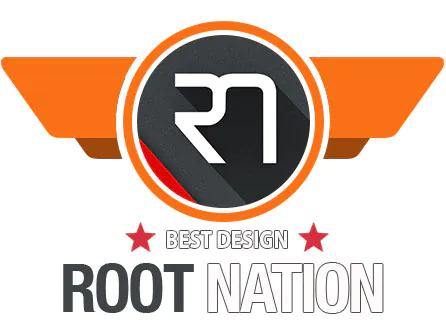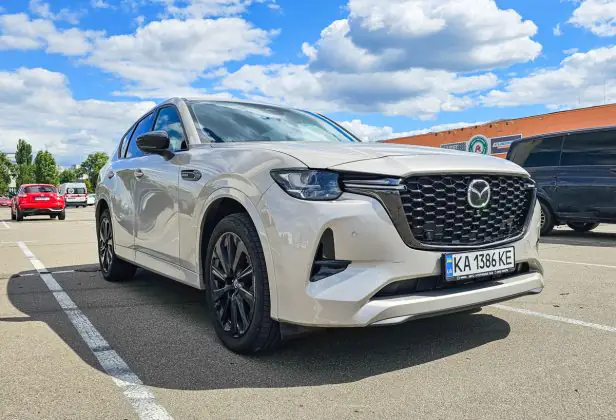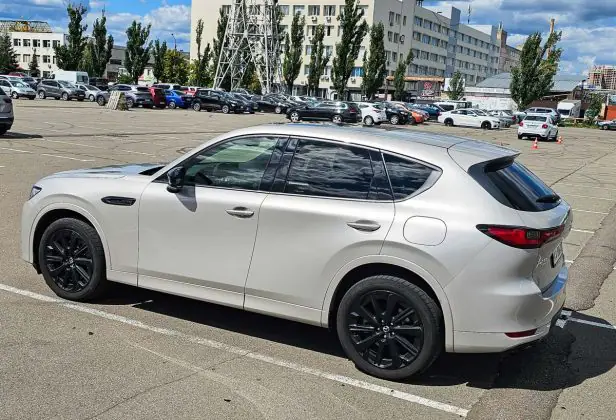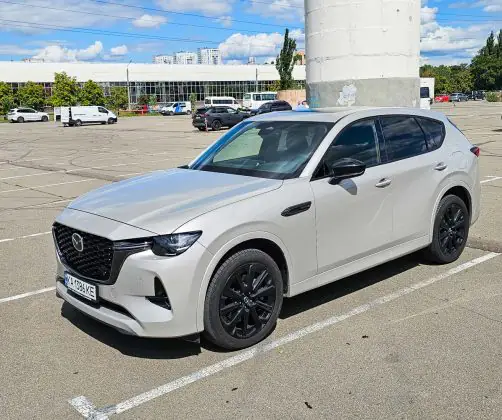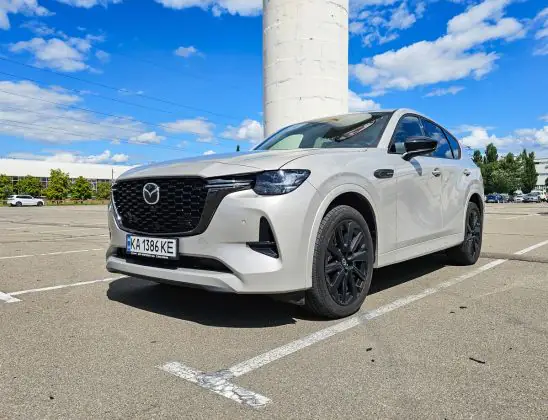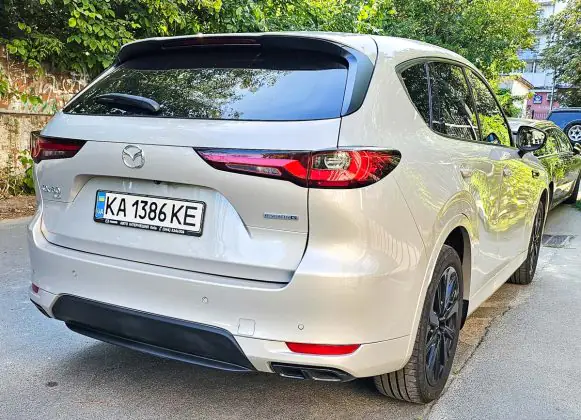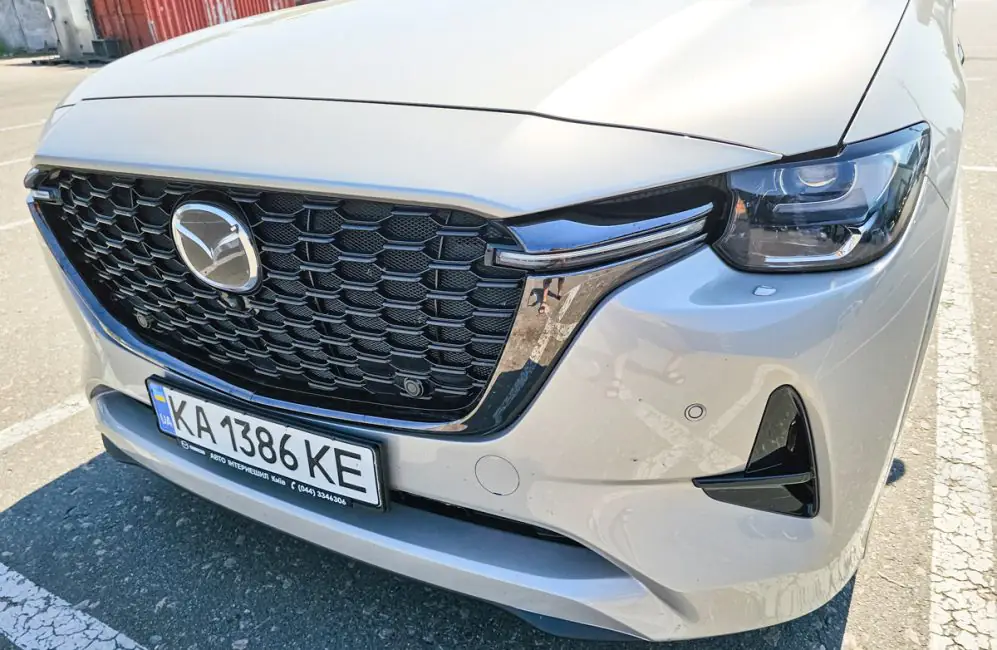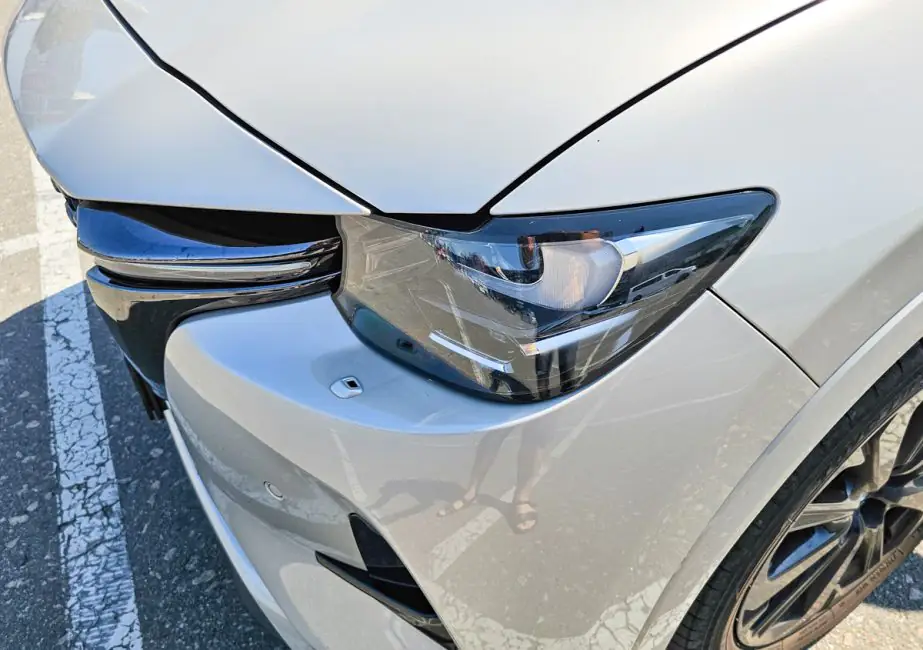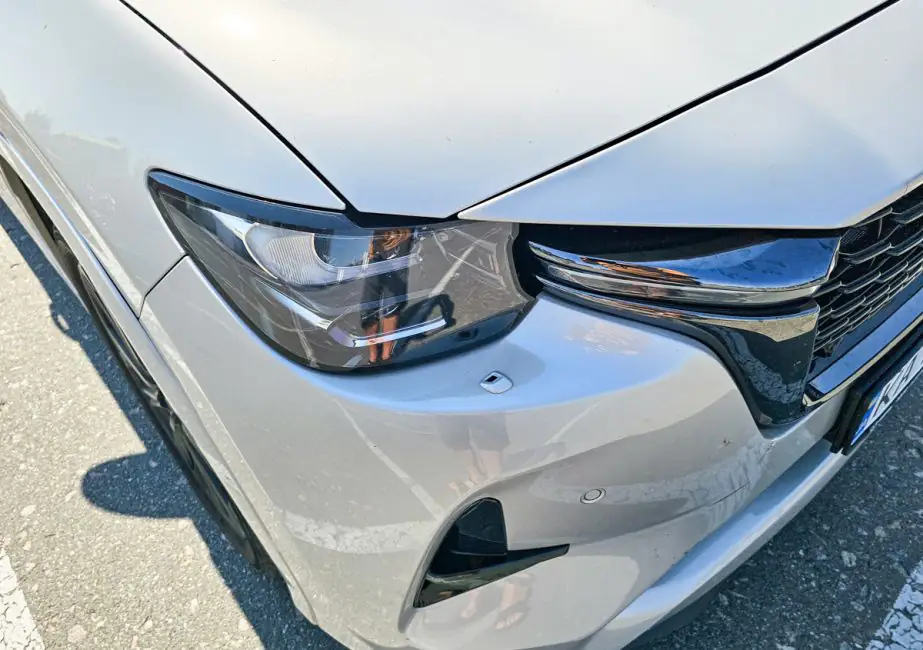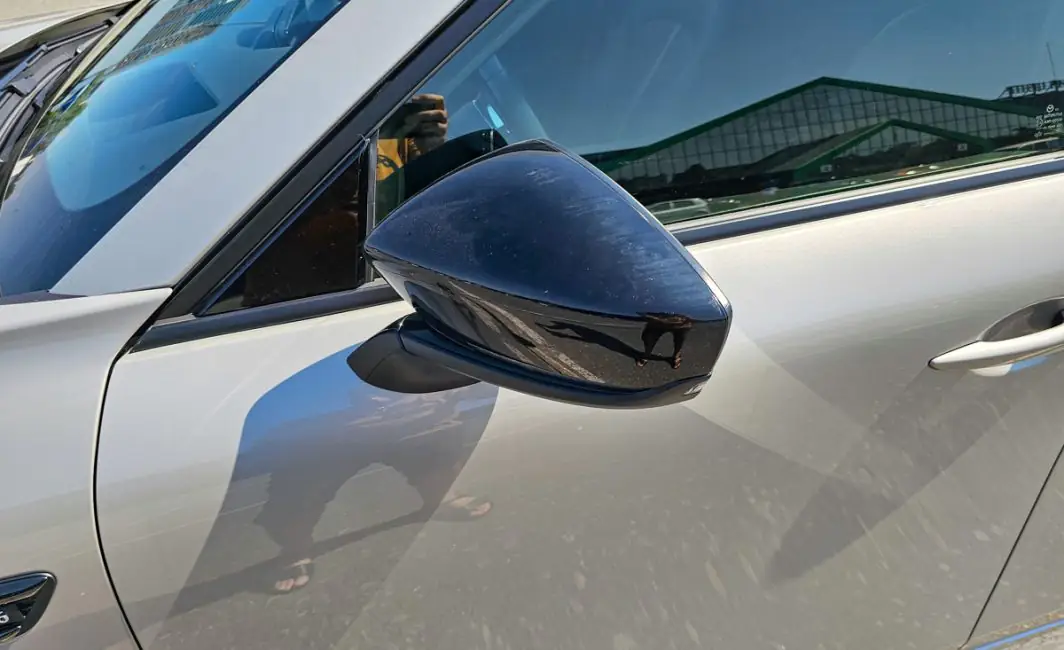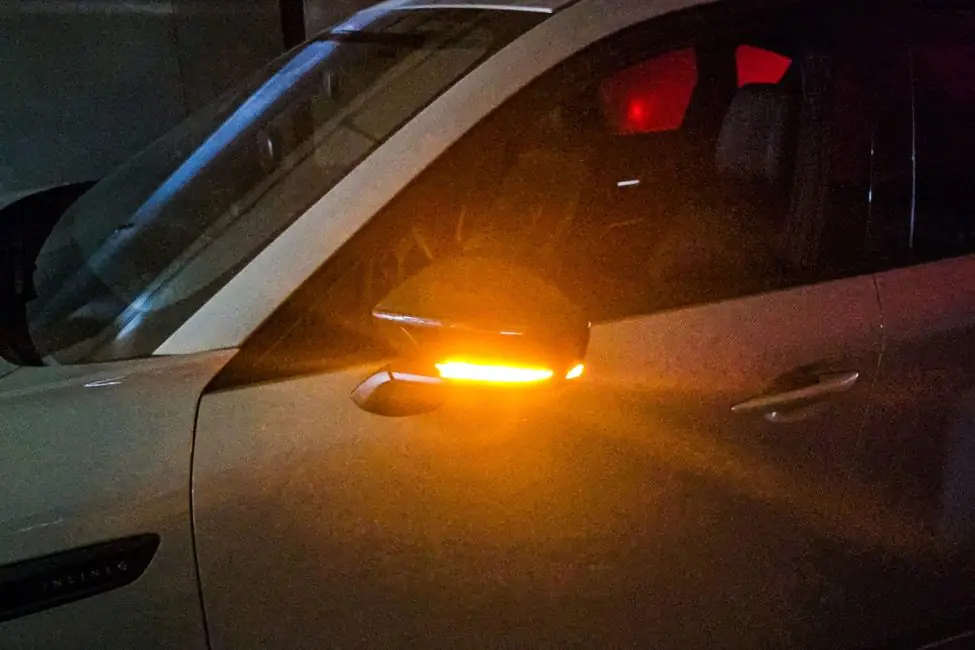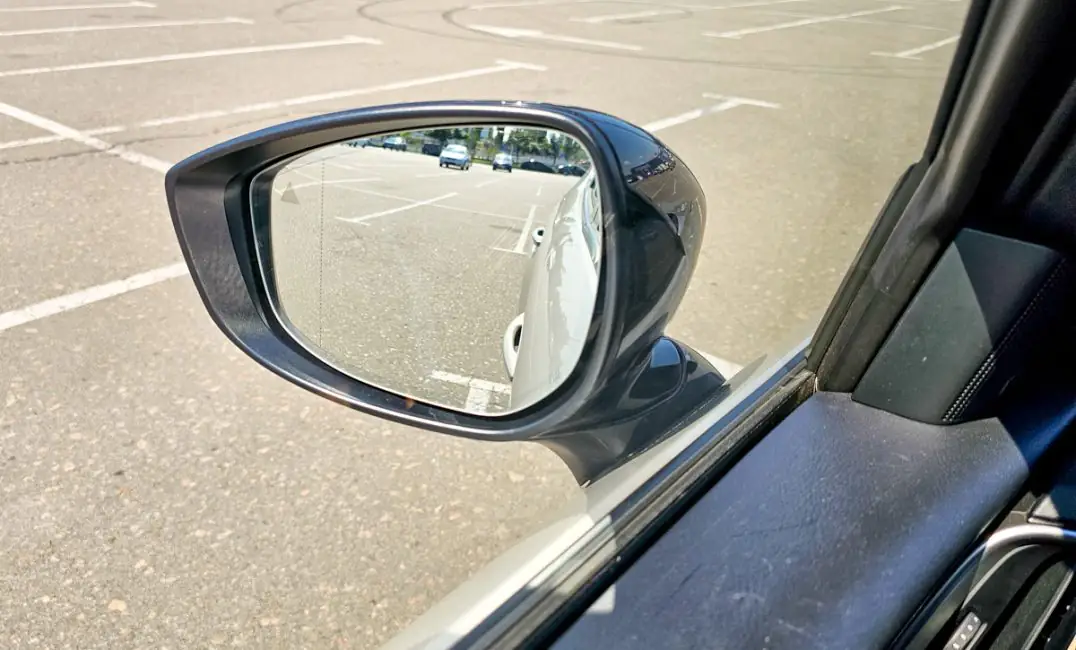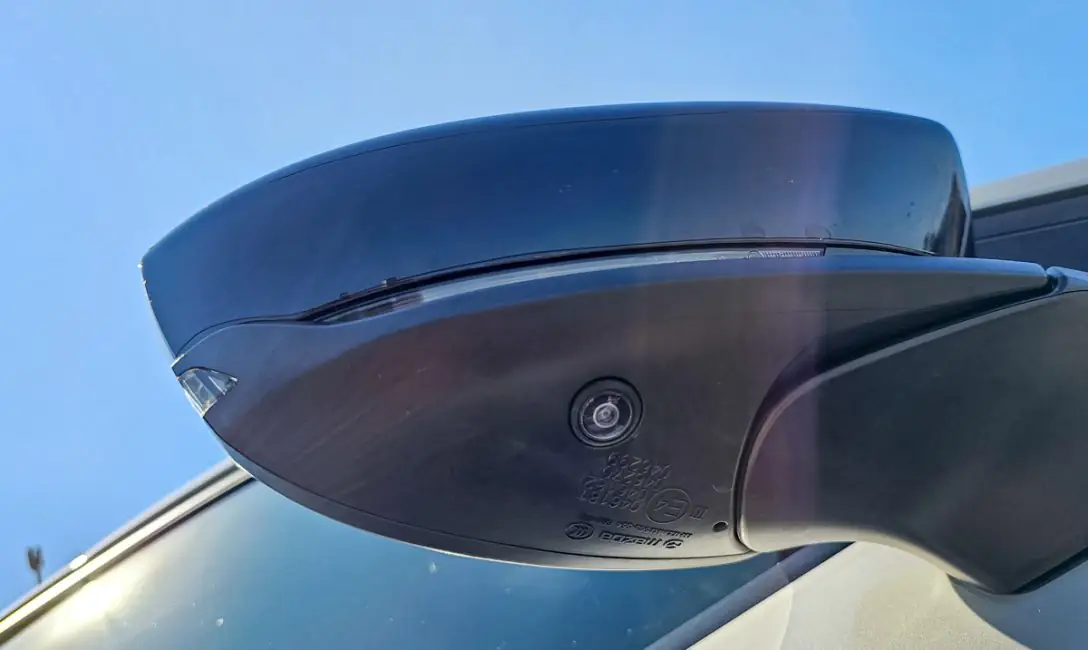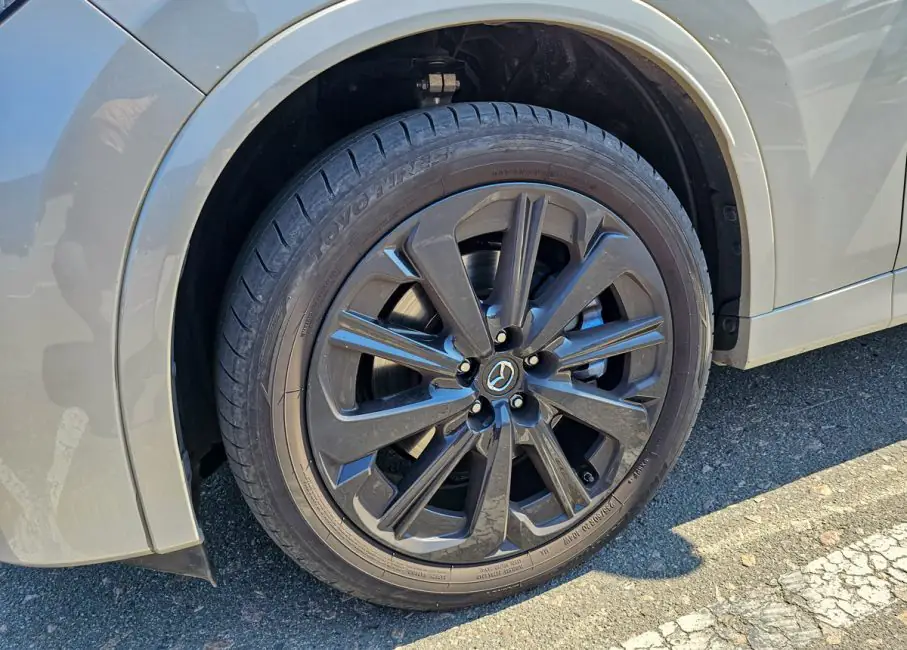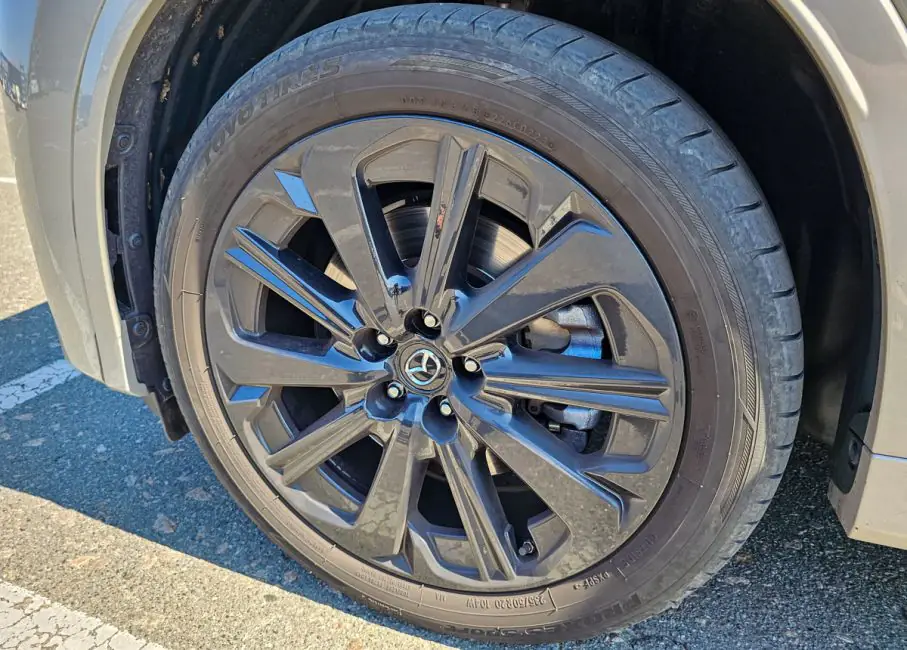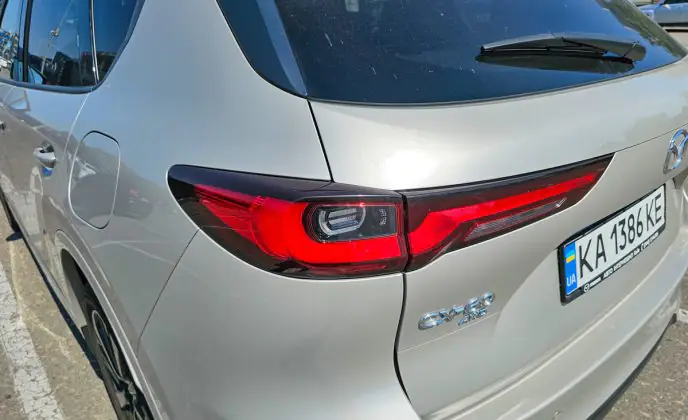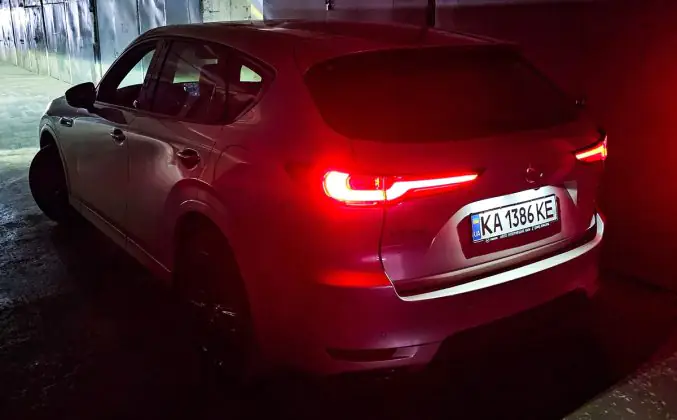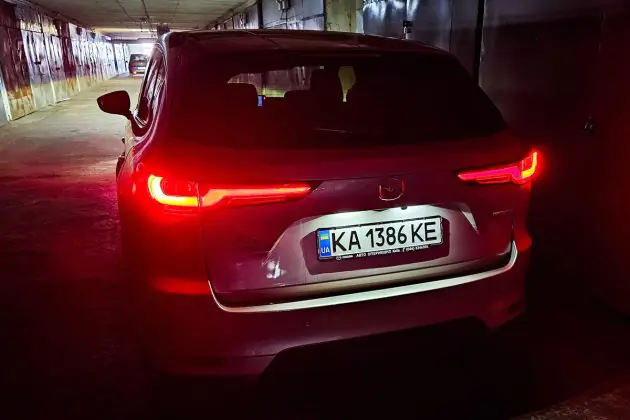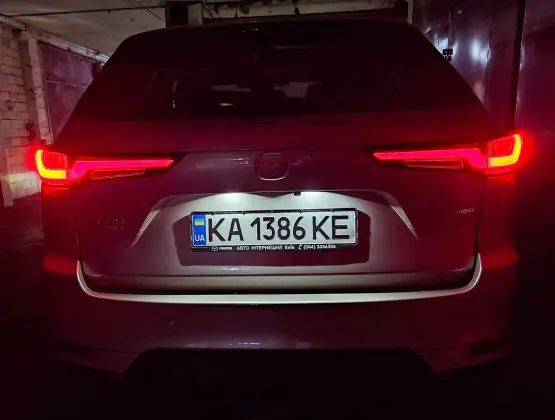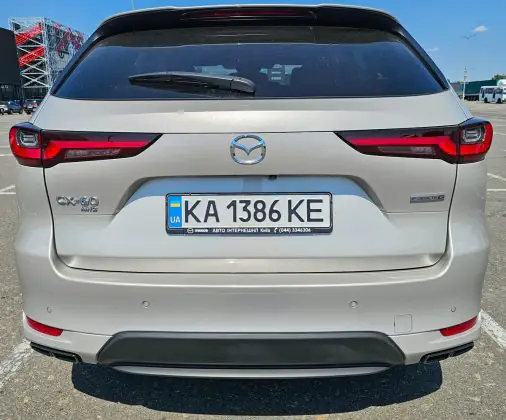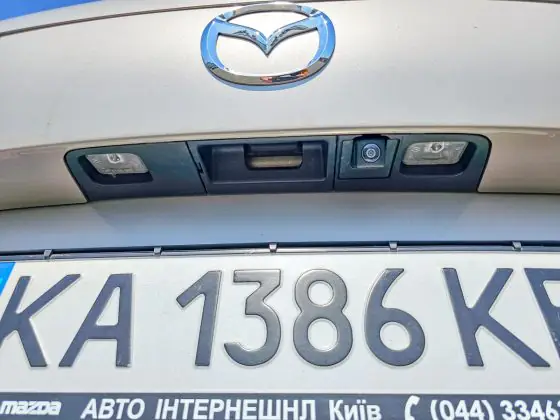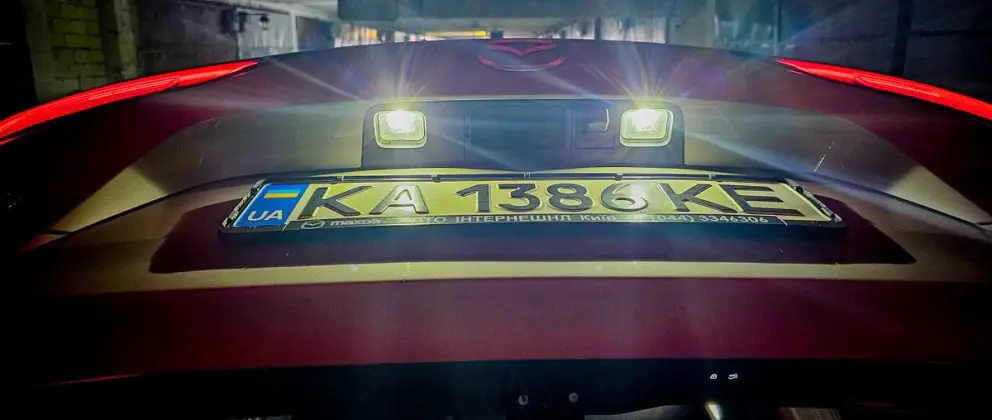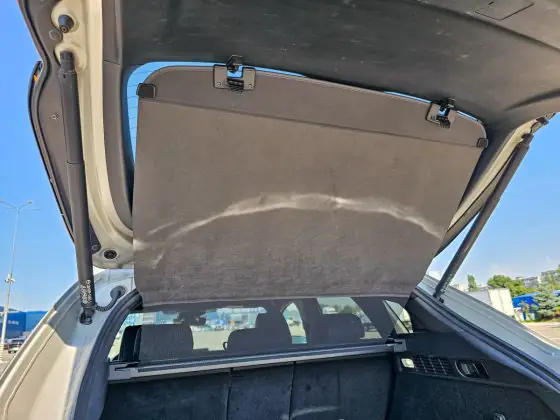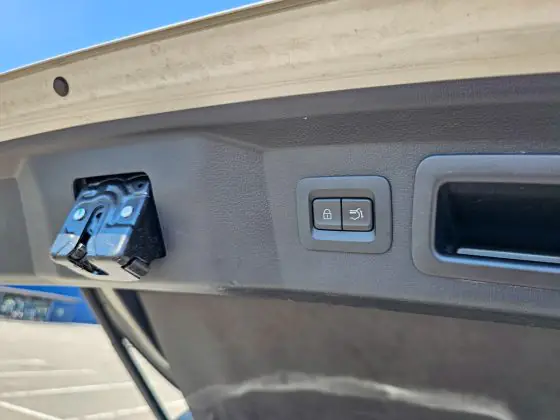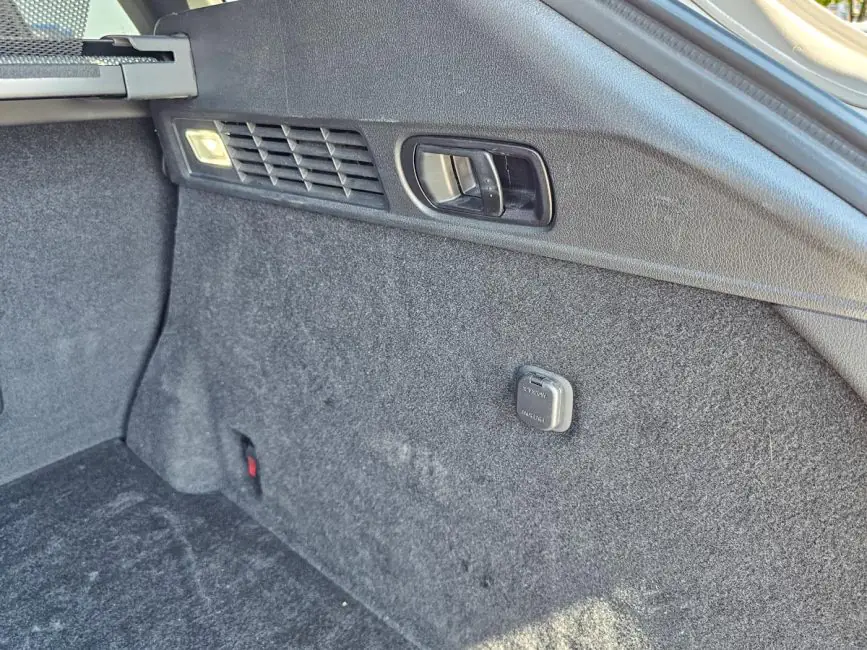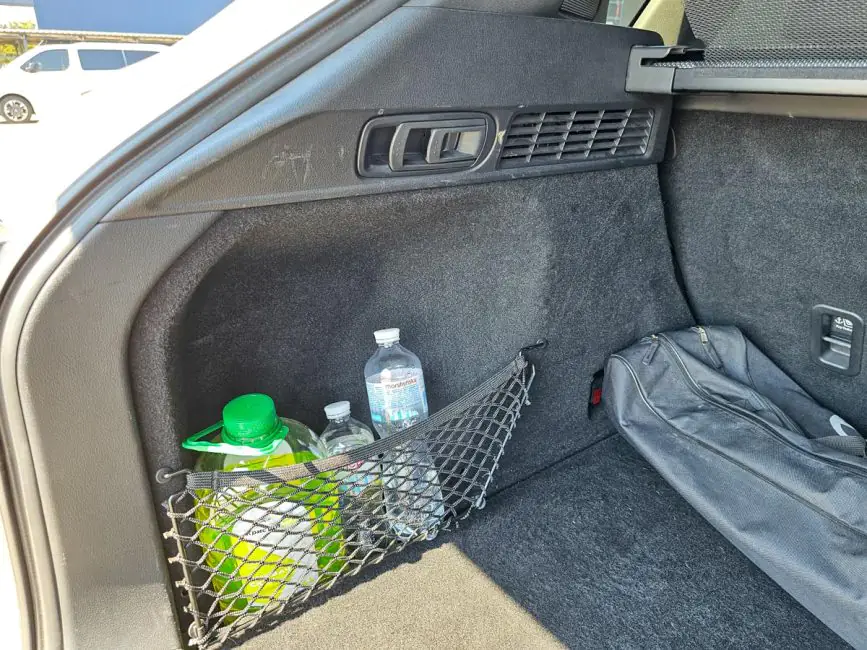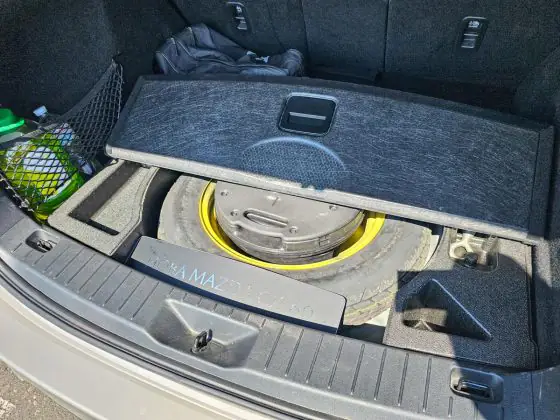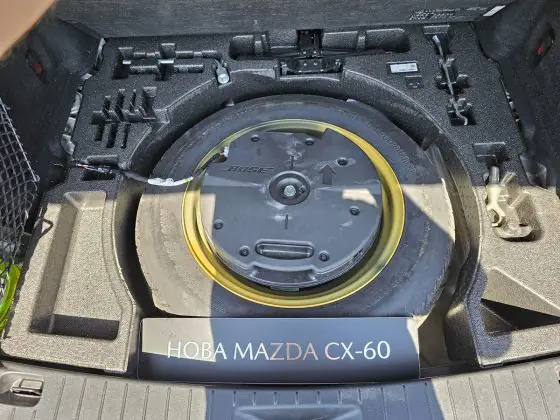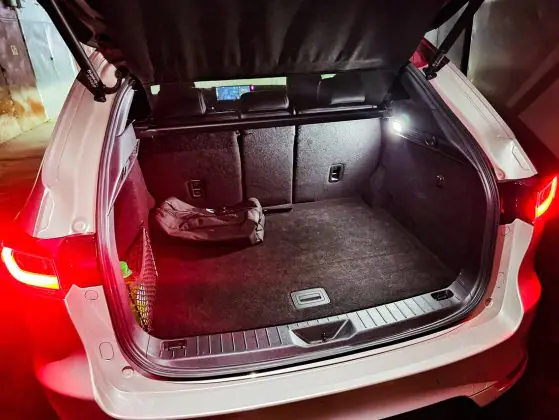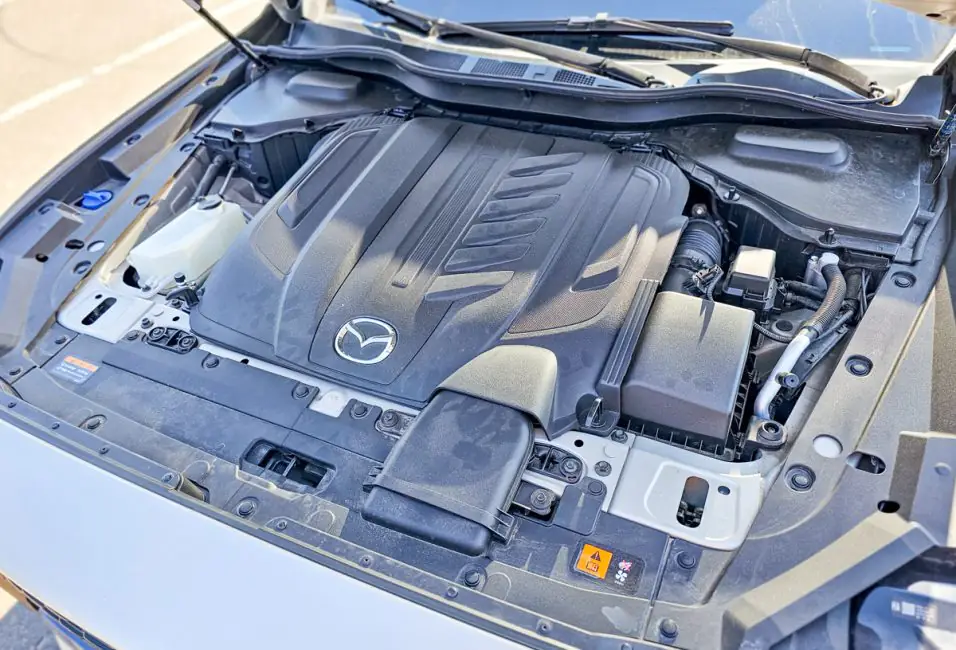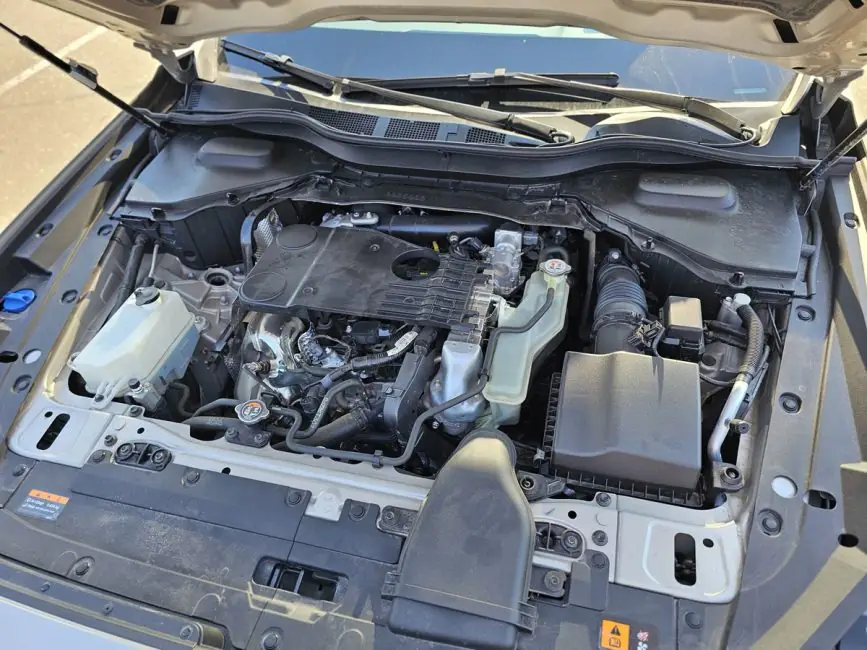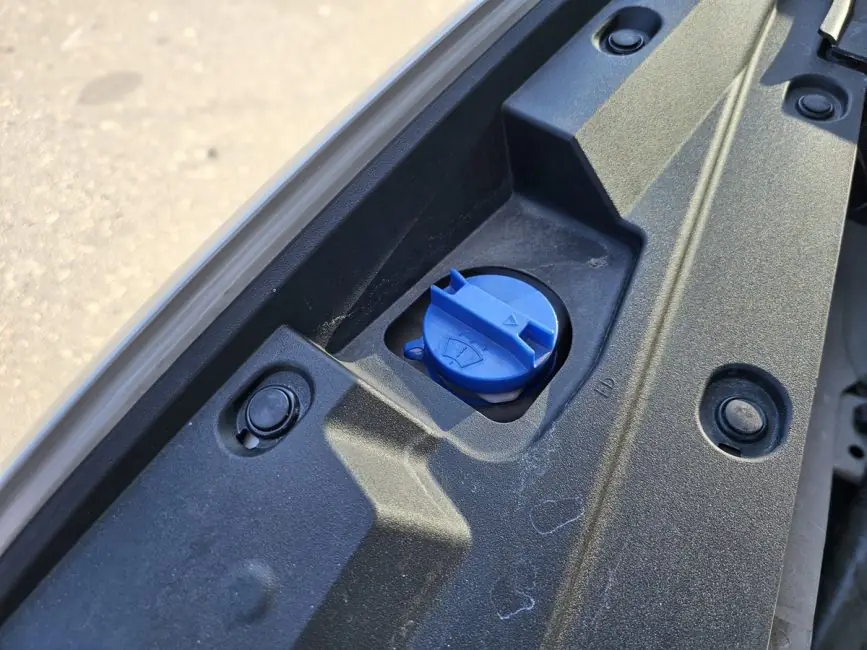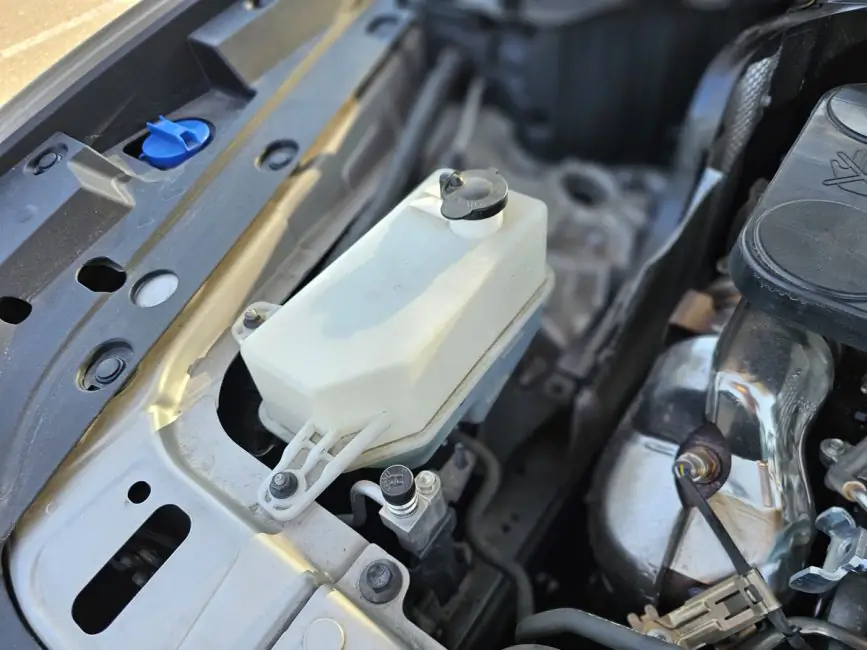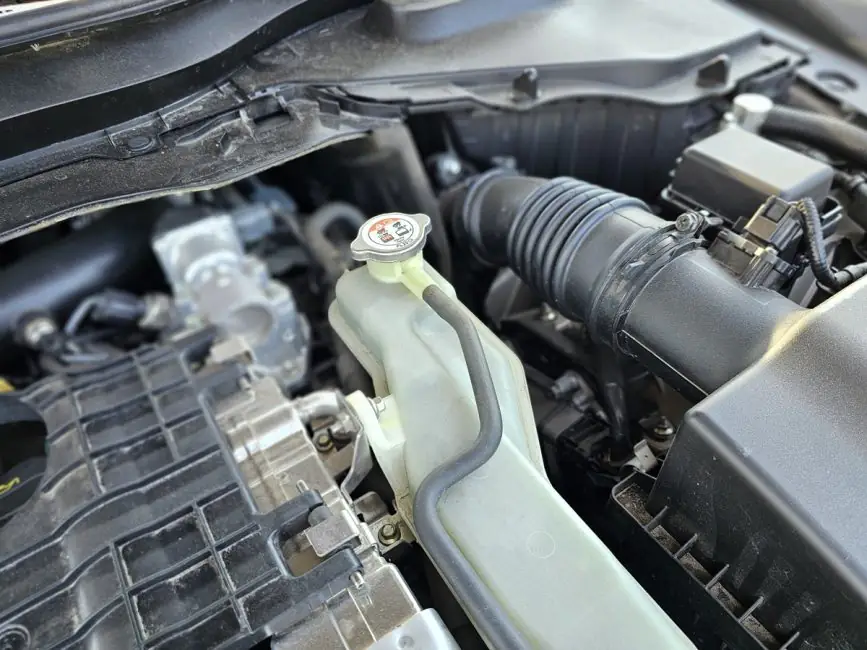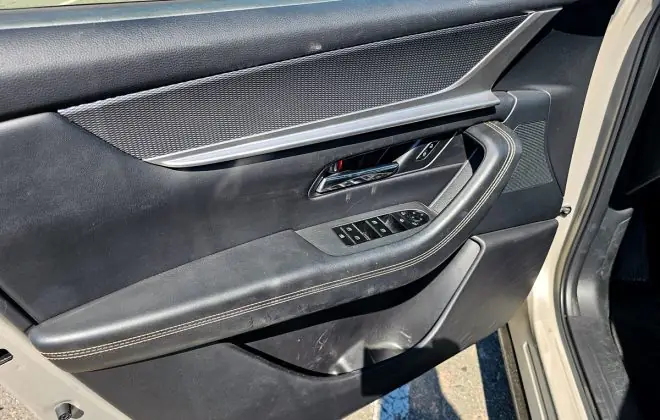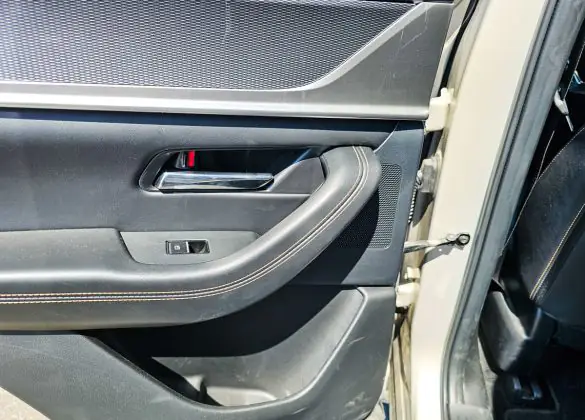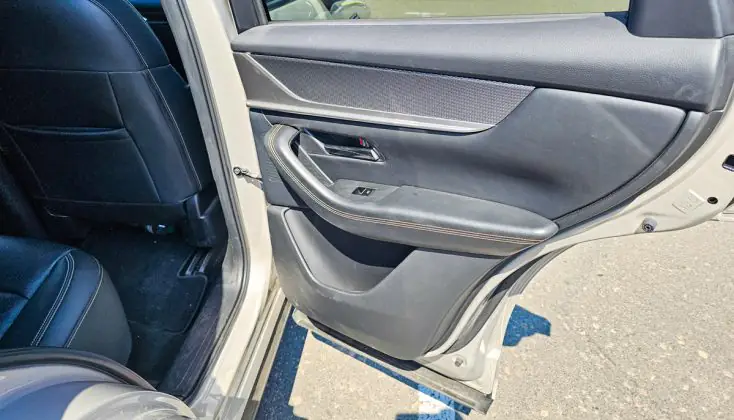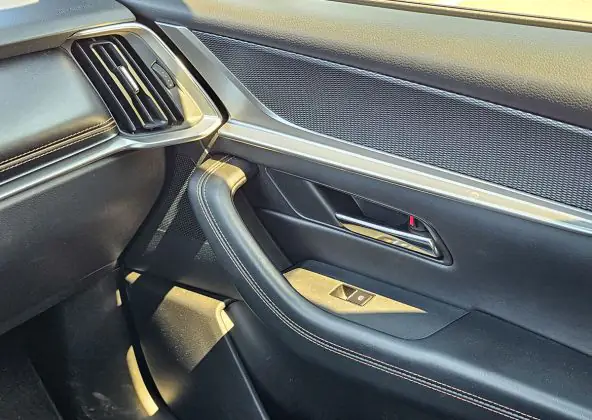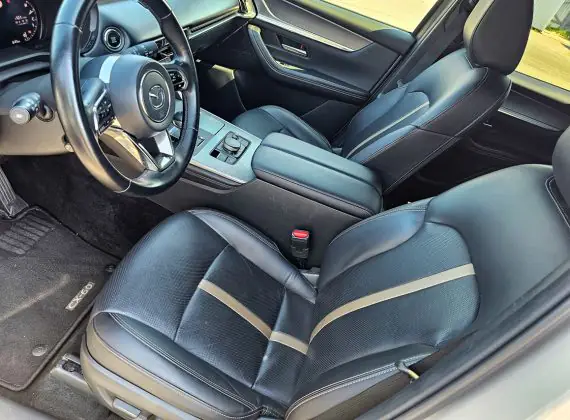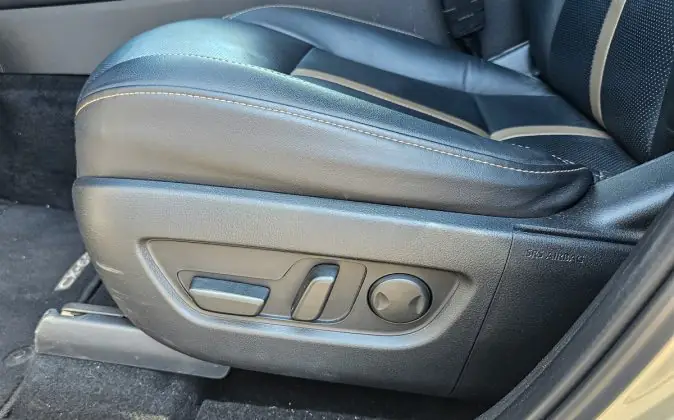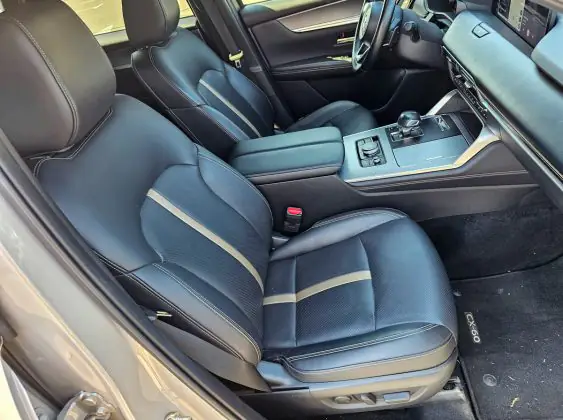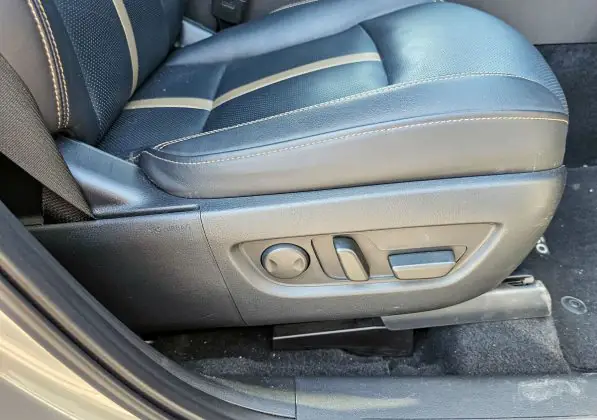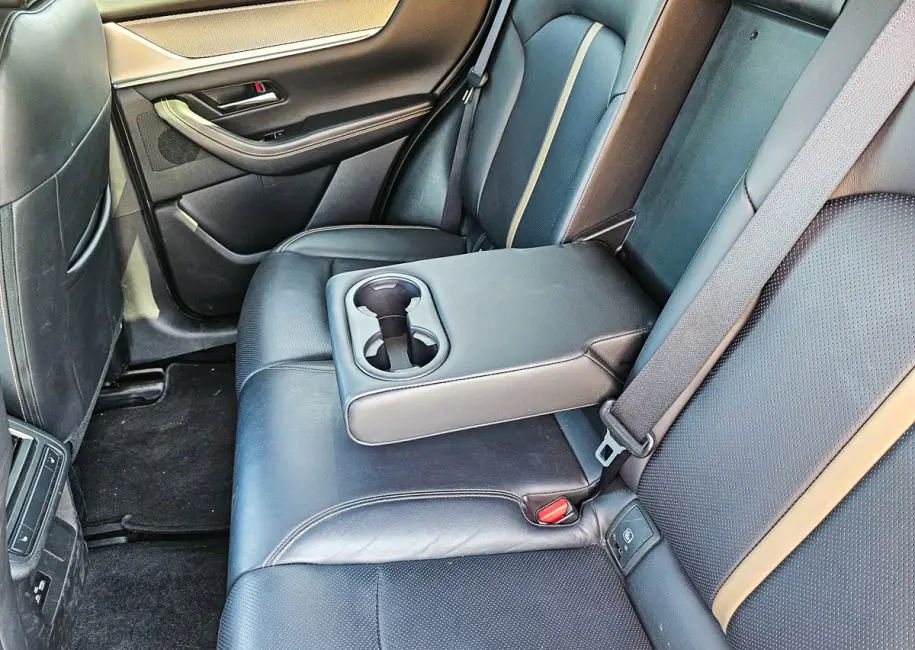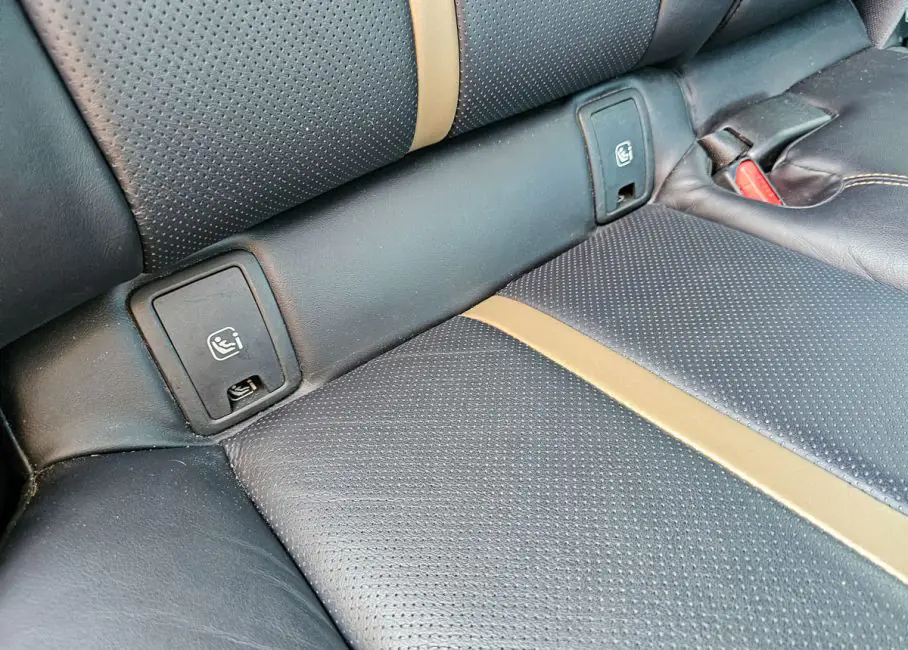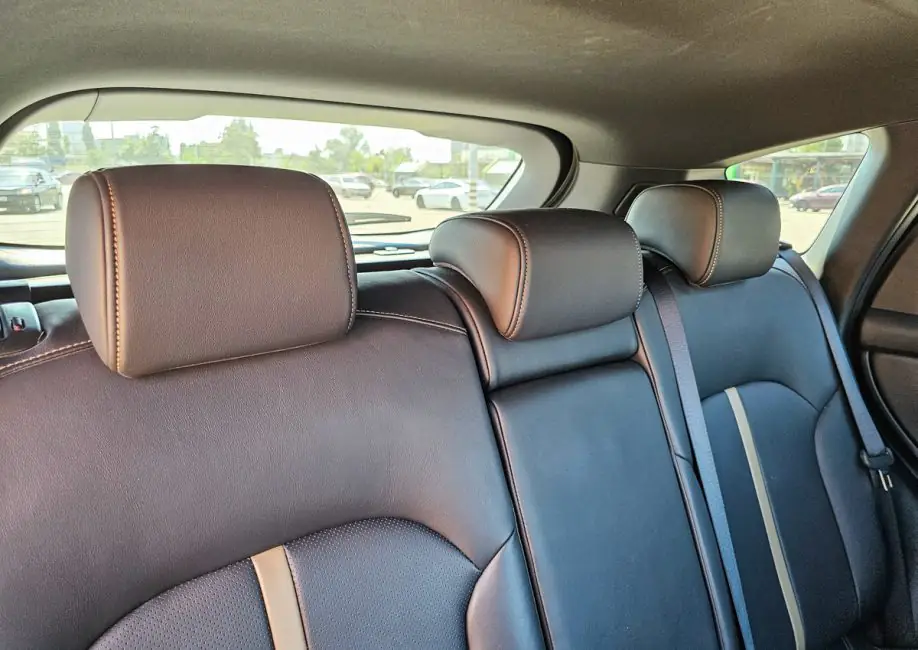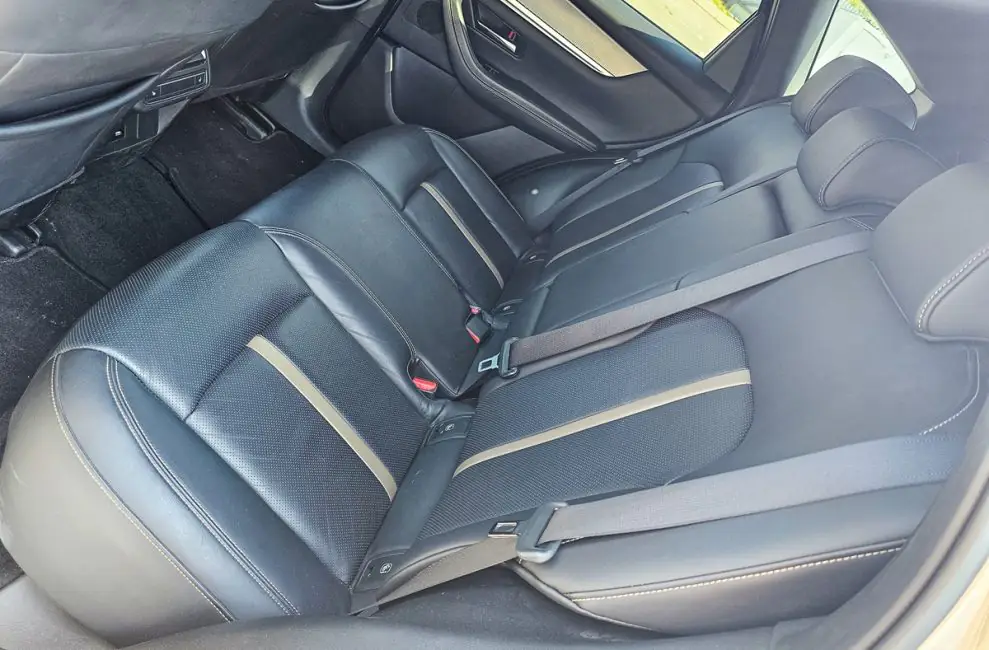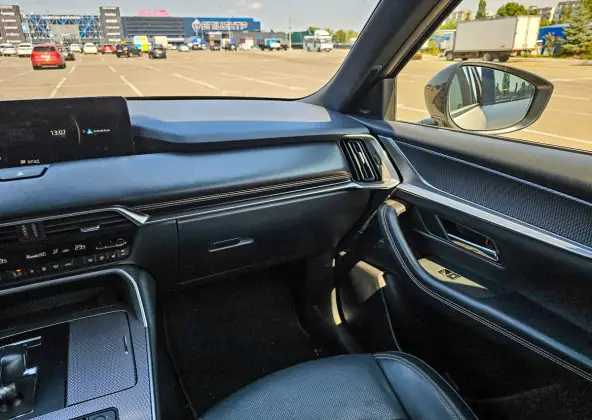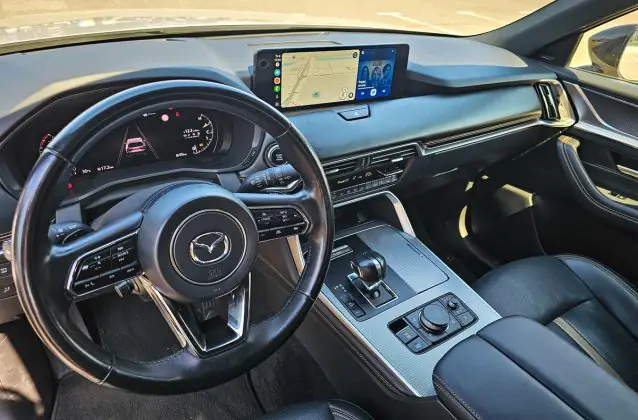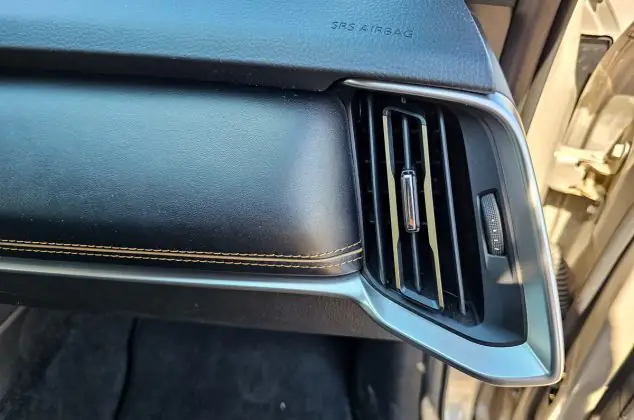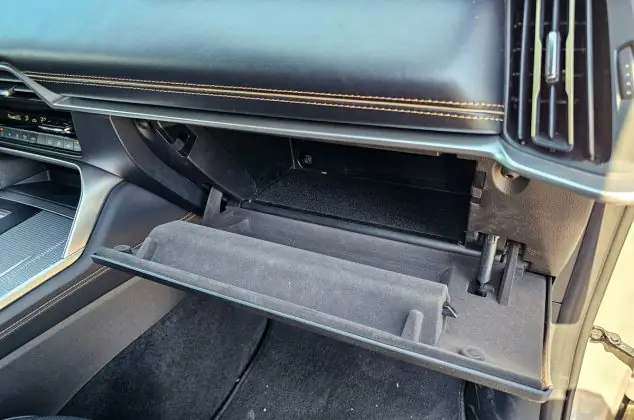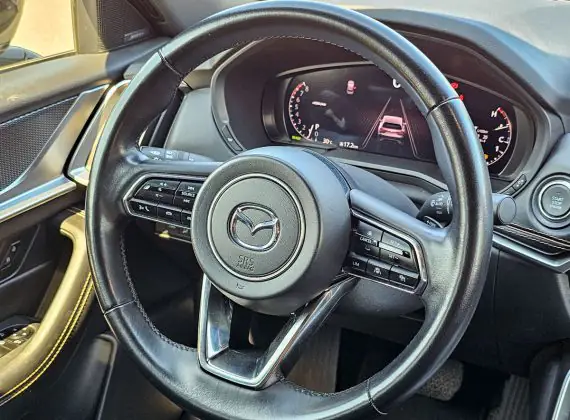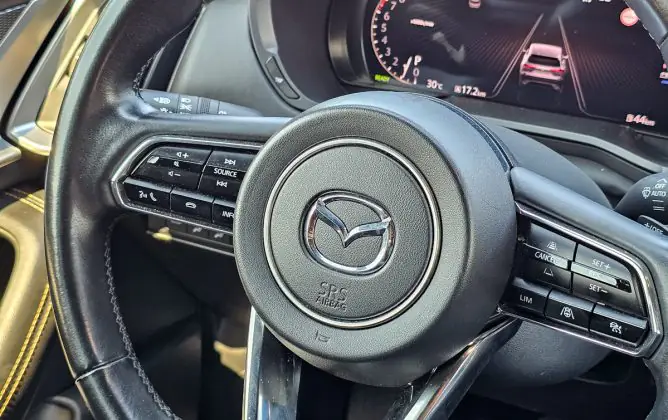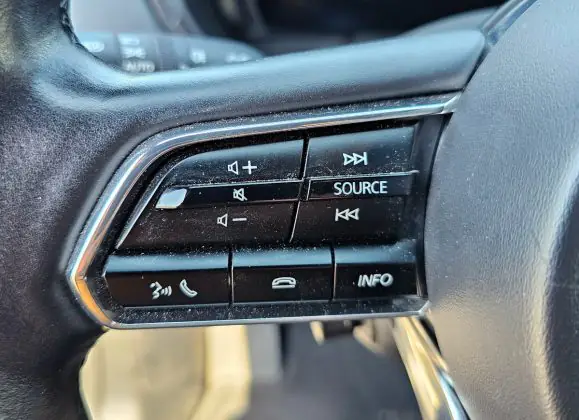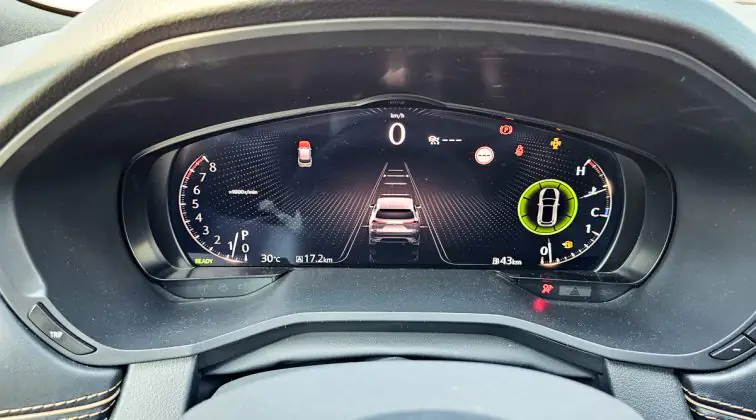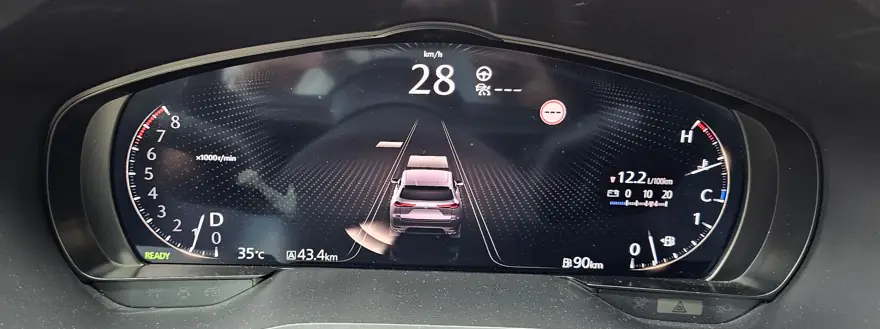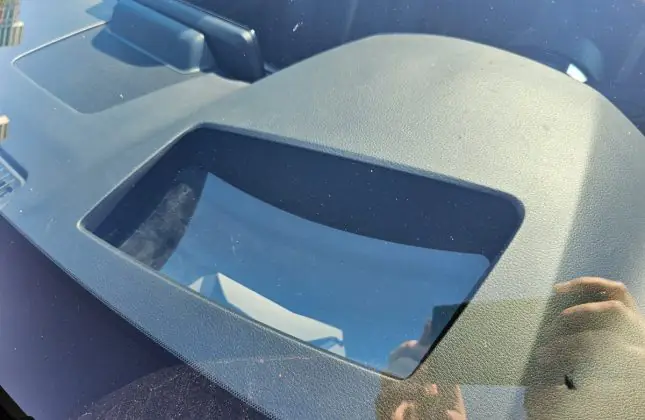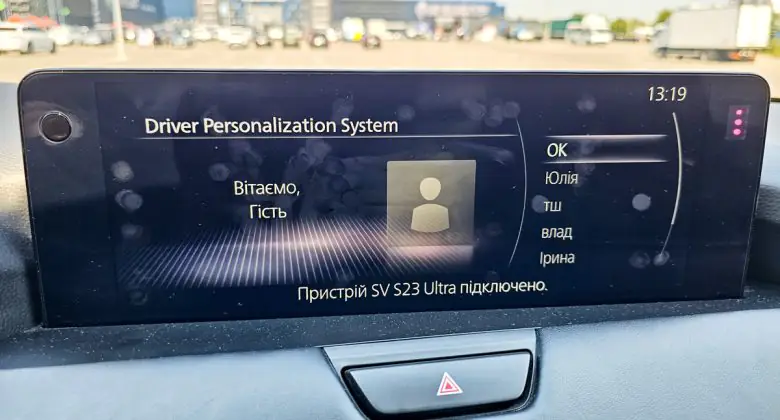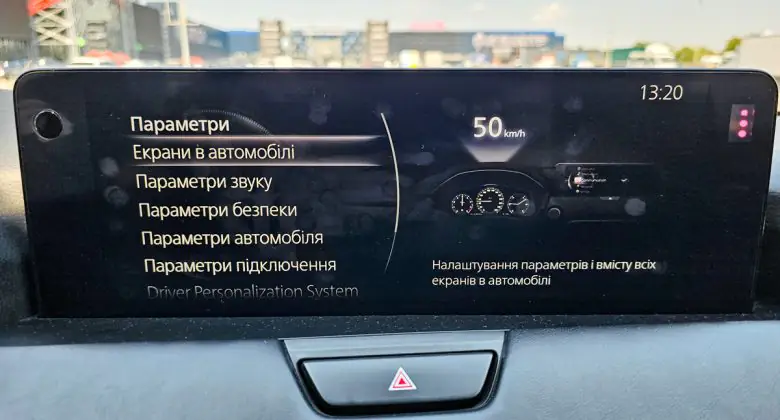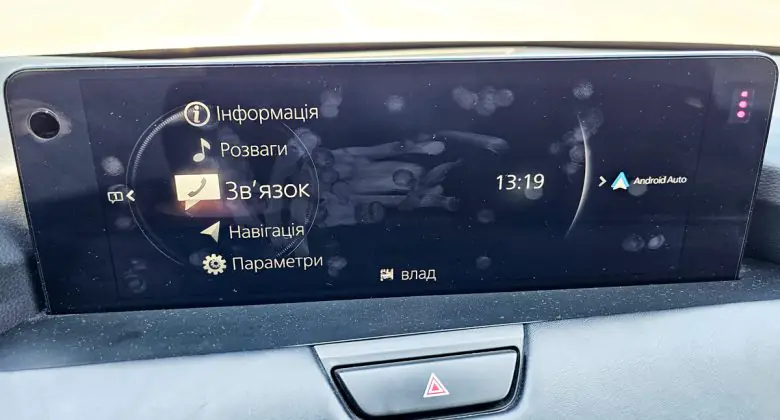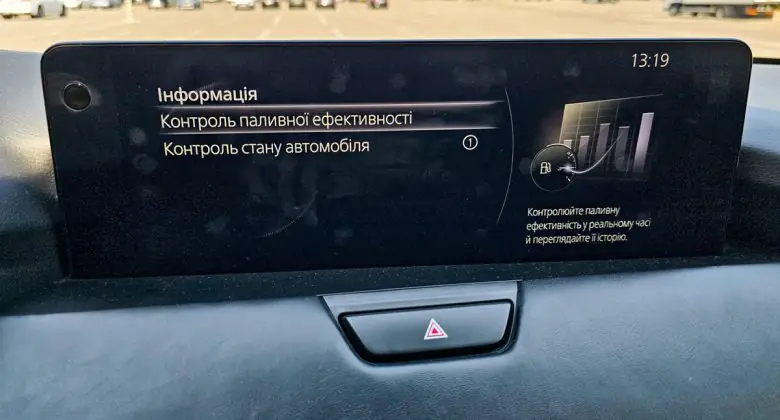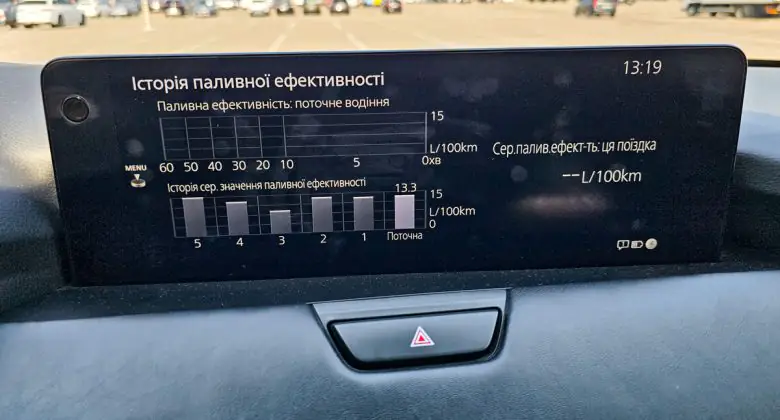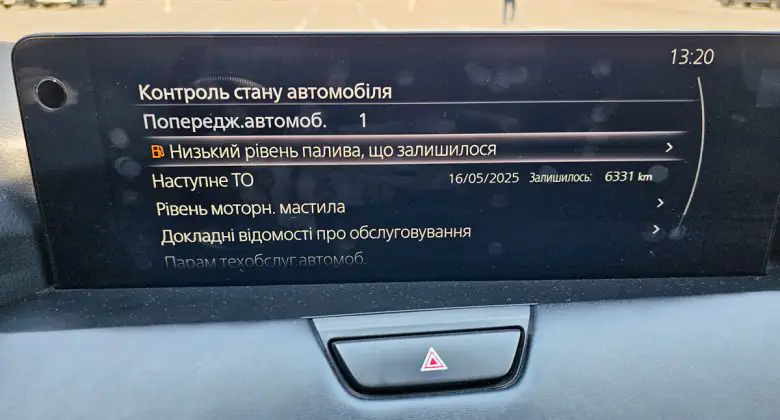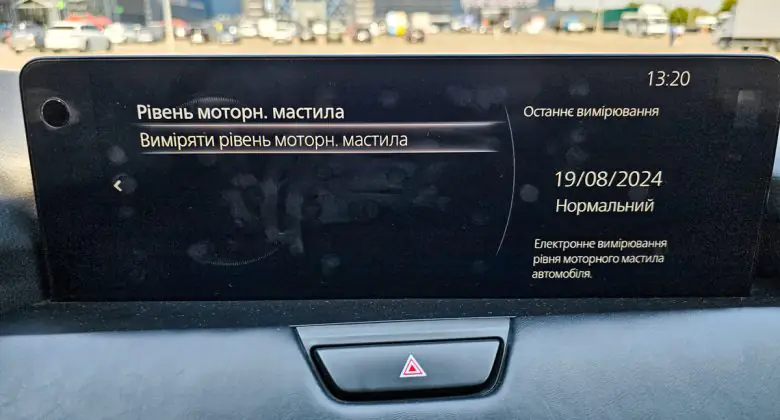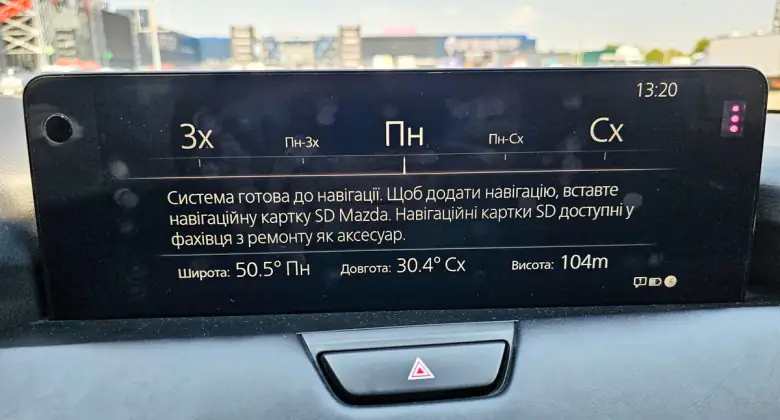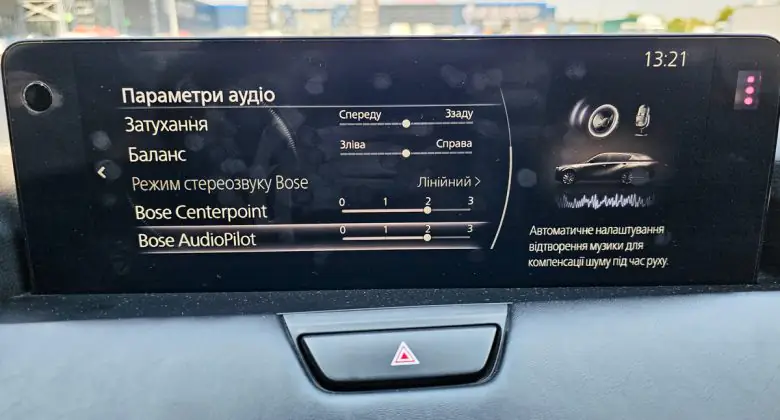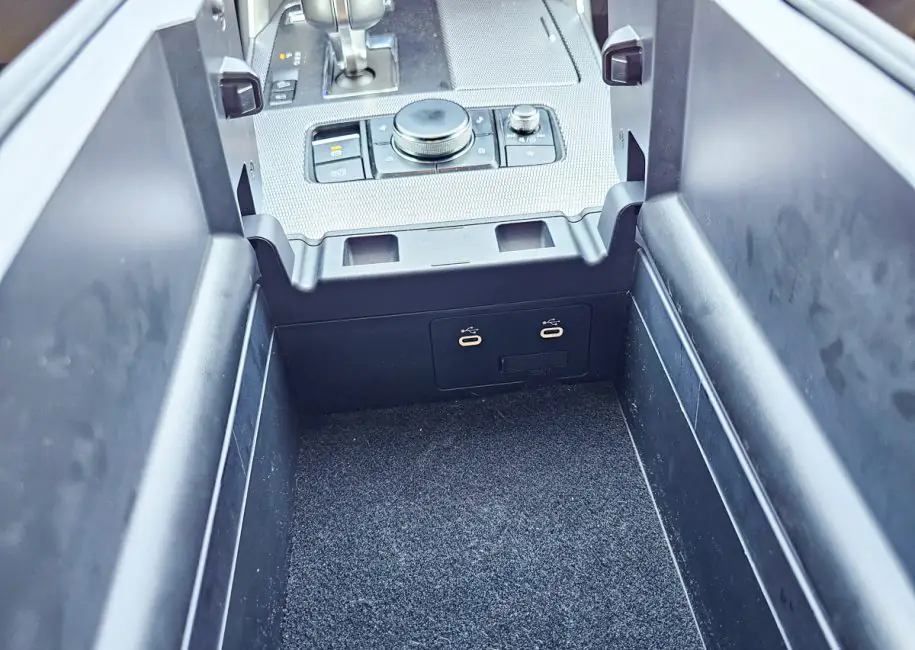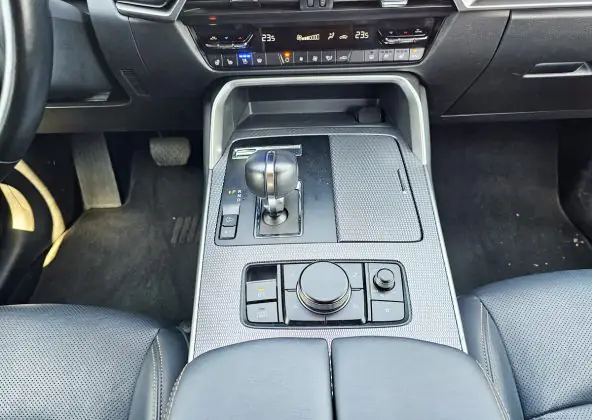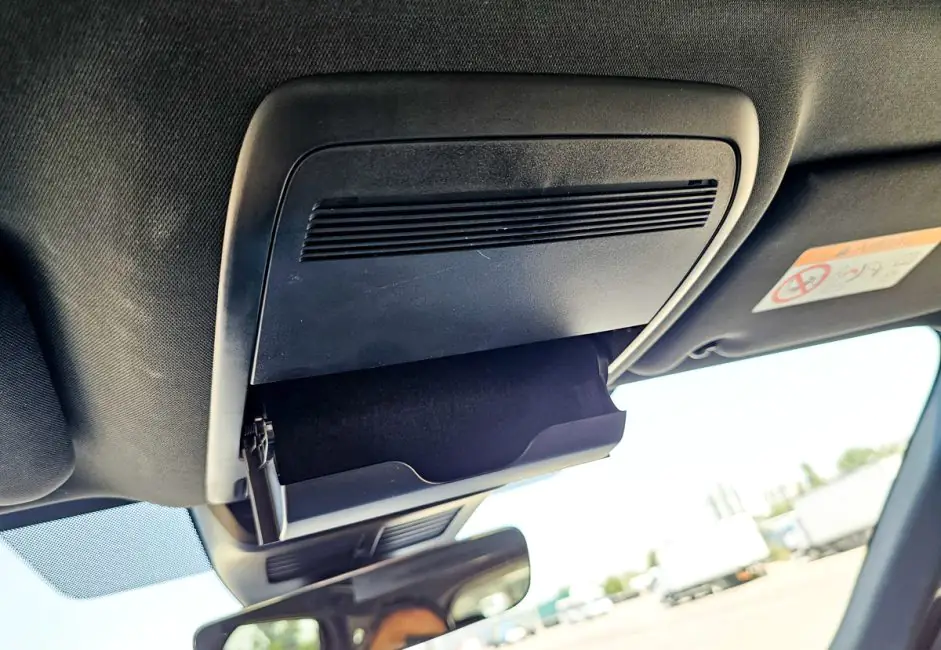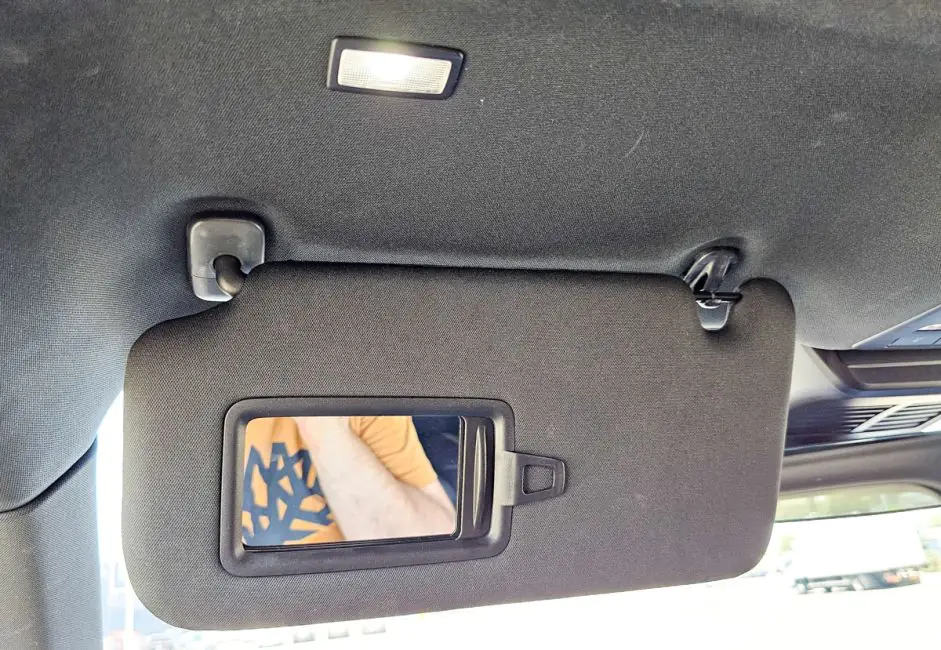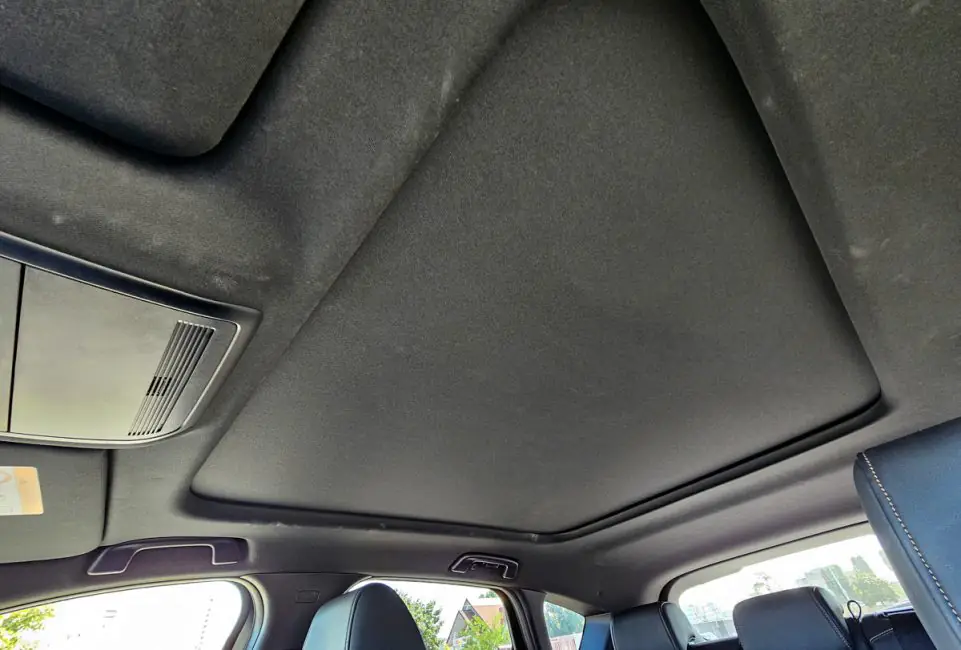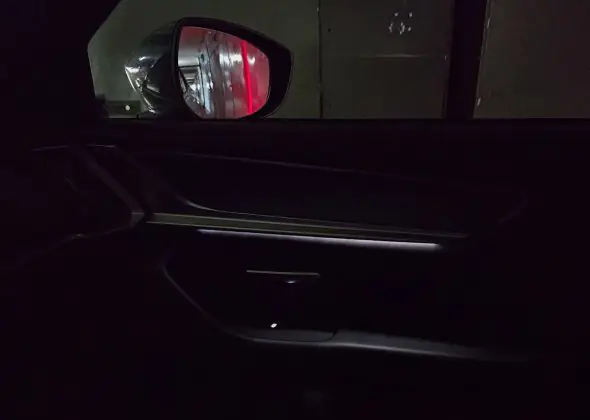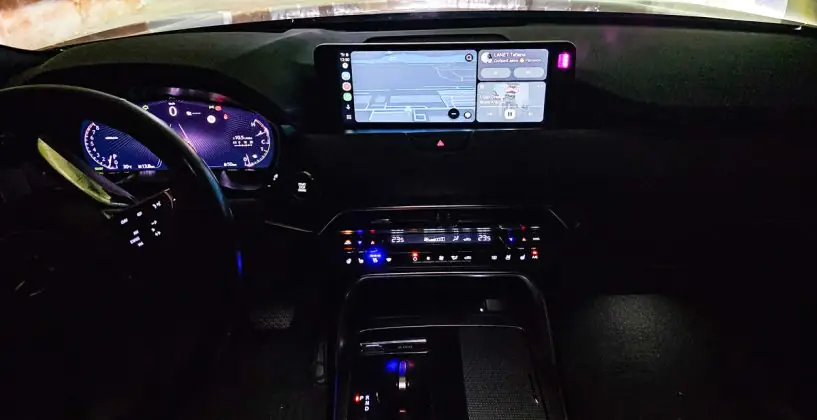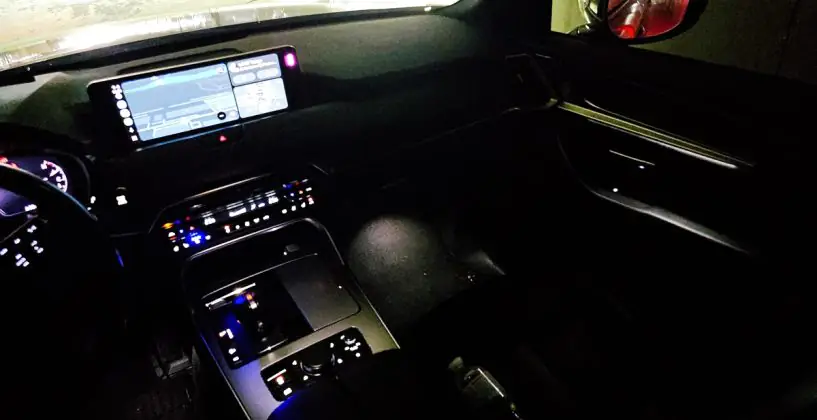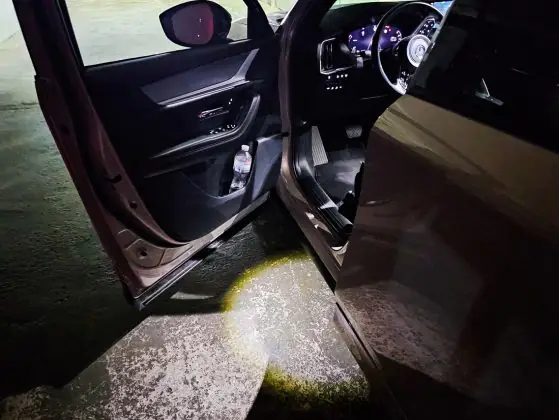© ROOT-NATION.com - Use of content is permitted with a backlink.
Mazda vehicles have always been associated in my mind with a distinctive Japanese style—sharp headlight design, a sleek body profile, and petal-shaped rear lights. This image was reinforced by the legendary sports coupes like the MX-5, RX-7, and RX-8 from the popular NFS Underground game series I played in my youth. Overall, the sporty aspect has always been part of the brand’s reputation. At the same time, I’ve always perceived Mazda as a brand for the people, offering cars that are quite accessible for the average citizen, and I never associated it with the premium class. That is, until fate brought the Mazda CX-60 crossover in its top-tier Premium-Sport trim to my doorstep for testing.
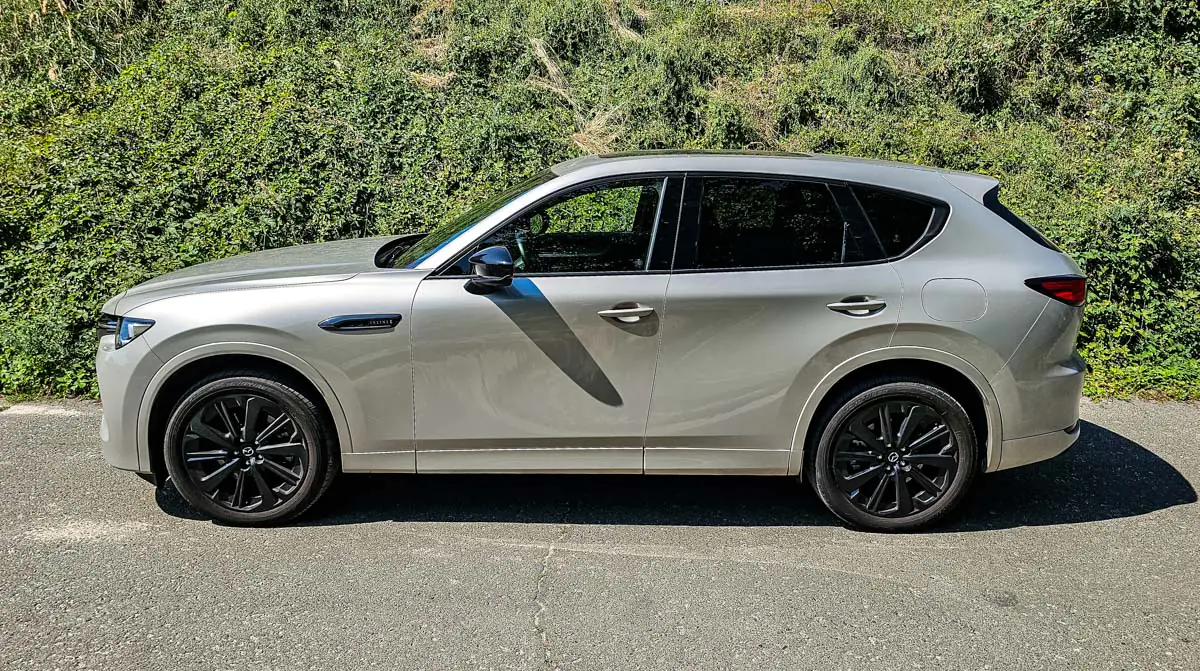
After a week of driving this vehicle, it both confirmed and challenged many of my stereotypes about Mazda. You can genuinely come to love this car, even though it has its flaws. I invite you to take a closer look with me at this iconic model in the company’s history. Let’s go!
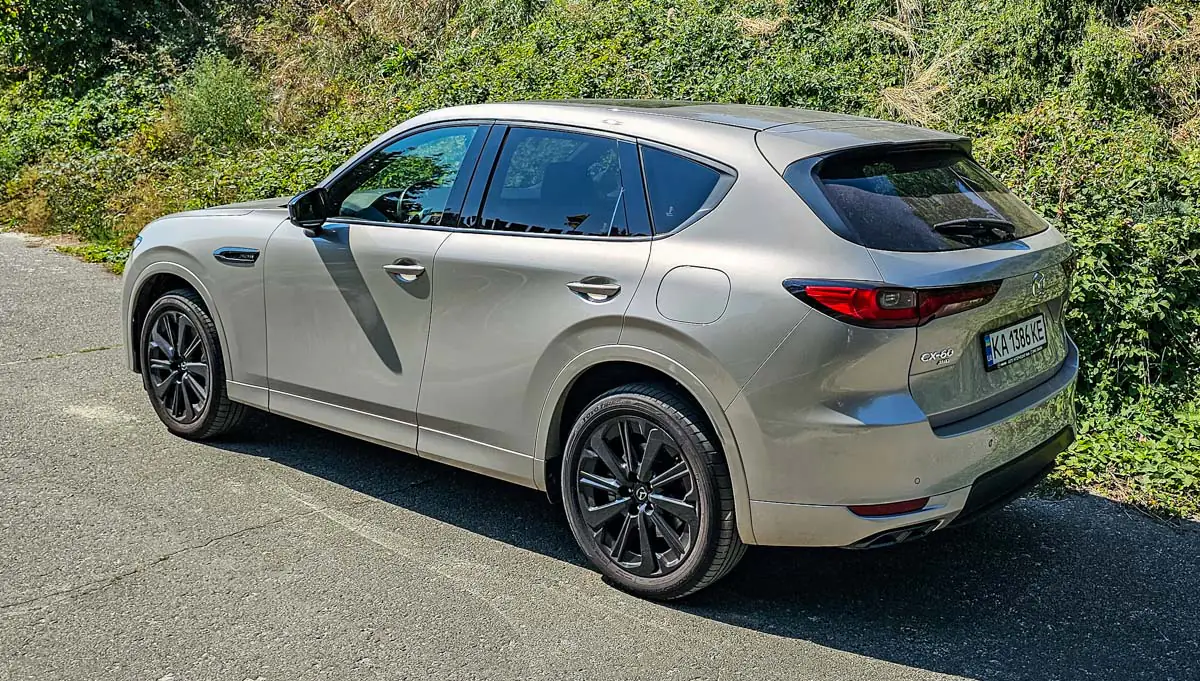
Mazda CX-60 positioning
The price of the Mazda CX-60 starts at around $40,000, which is standard for a large crossover, while the Premium-Sport version nearly reaches $60,000. This places it firmly in the entry-level premium segment.
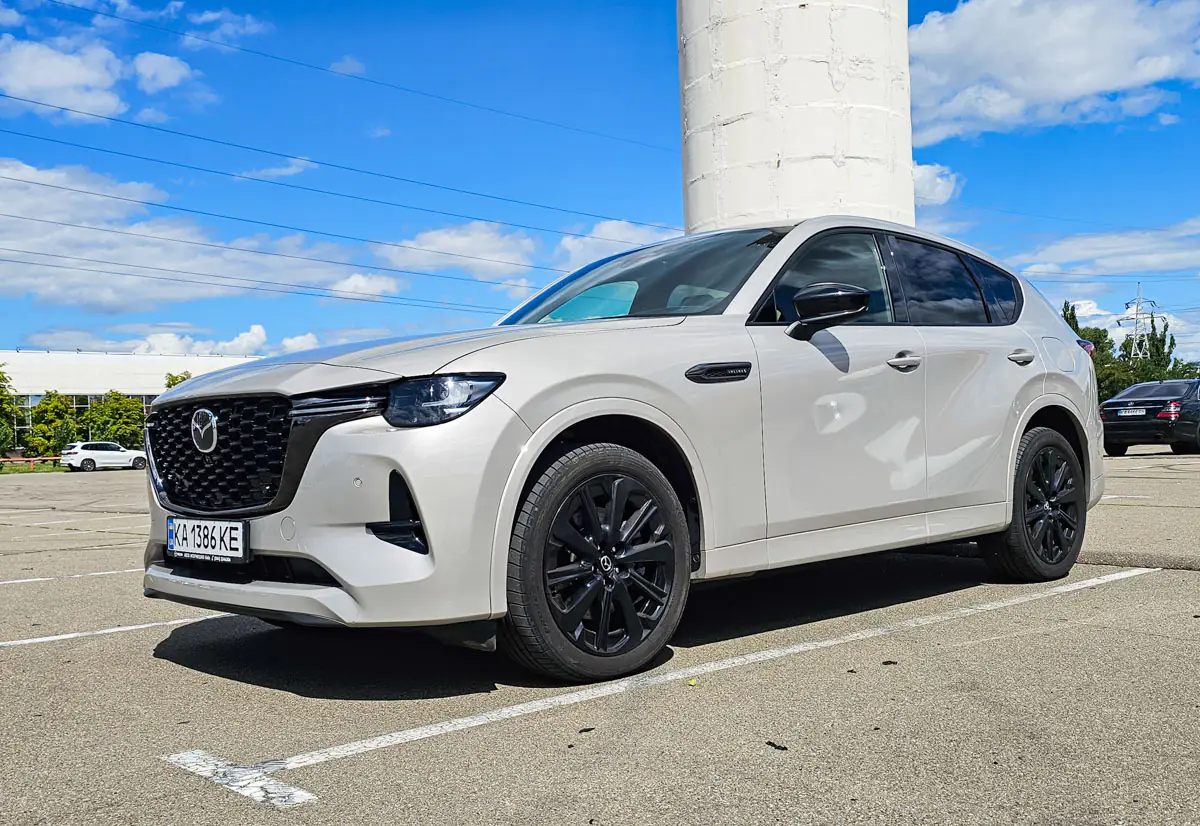
In terms of size, the CX-60 is quite large, measuring nearly 4.8 meters as a five-seat SUV. There are larger models in the lineup as well, such as the seven-seat CX-90.
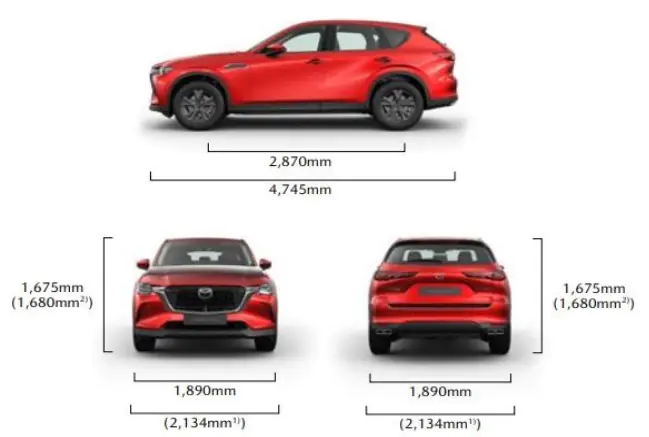
If we set aside the price and focus on dimensions, SUVs measuring up to 5 meters are my favorite size at the moment.

My current Ford Edge is approximately the same size. I emphasize this to highlight that this is my personal choice and favorite car format right now, due to the excellent balance between dimensions and usable space. So please keep in mind my bias toward vehicles of this class going forward. Let’s hope this bias stems from increased awareness.

There are many advantages to a nearly 5-meter SUV. A crossover of this size, with its spacious interior, is perfect for a large family. It can be used for trips to the countryside or vacations with multiple generations of relatives, or for comfortably traveling long distances with friends. Plus, the roomy trunk, which can be expanded by folding down the rear seats, is handy for household needs. For example, I once helped some friends move into a new place. My car was able to fit all their belongings from a two-bedroom apartment in one go, which surprised everyone, including me.
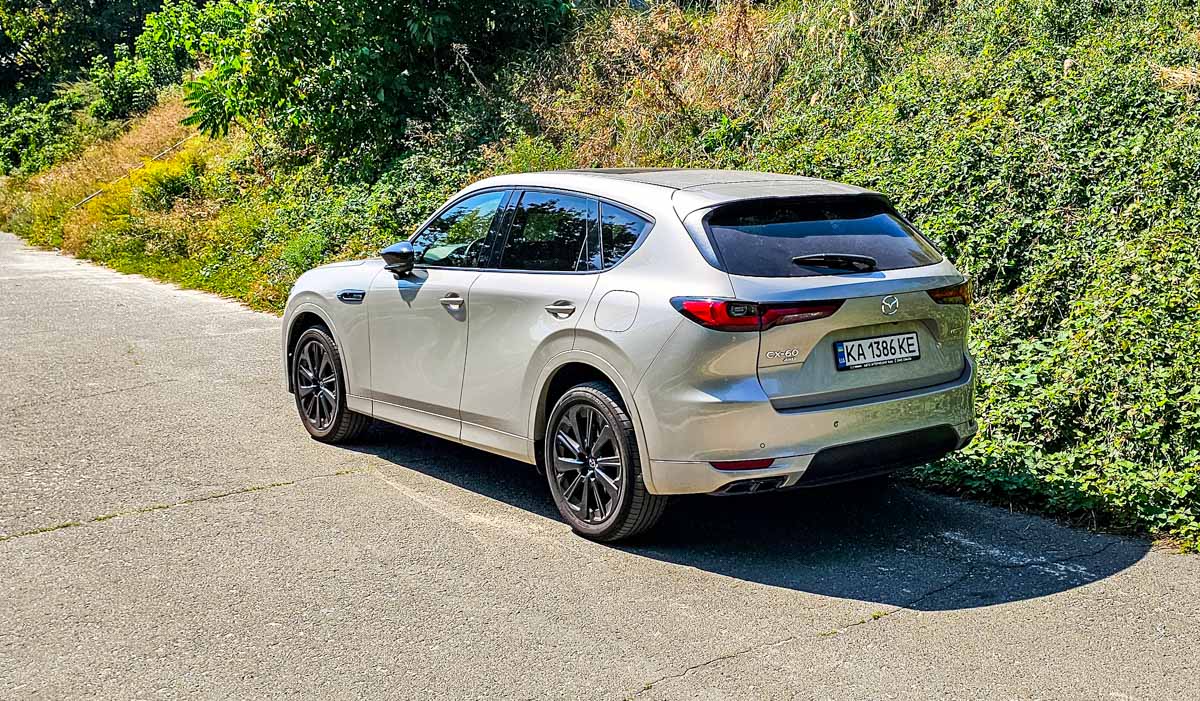
All-wheel drive also helps in many situations, not just off-road; even in the winter in the city, trust me. I believe many people share my fondness for this size of SUV, which is confirmed by real-life observations. For example, in Kyiv, this is definitely one of the most popular sizes for crossovers. This makes this review even more interesting, doesn’t it?
Read also: Škoda Octavia A8 Review: When You Get More Than You Expect
Exterior
The exterior of the Mazda CX-60 aims to create the image of a premium vehicle, and it mostly succeeds. The car looks quite solid, though it leans distinctly towards a sporty style. This impression is achieved through the body design, high-quality materials, and modern multi-layered paintwork.
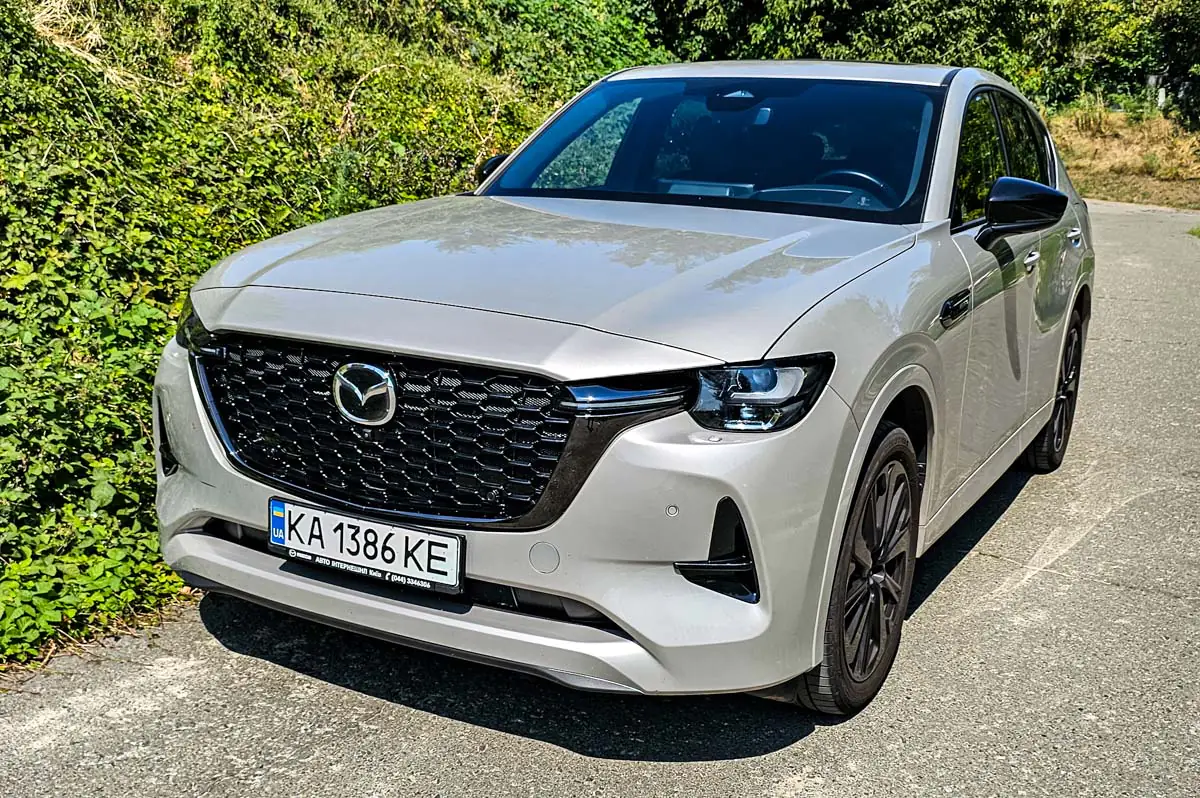
However, the brand’s signature style remains intact. Even if you cover the Mazda logo, most people, regardless of gender or age, would still recognize the brand. Regarding the Premium-Sport trim, I can note that it features an anti-chrome package, along with black mirrors and wheels on the exterior.
Mazda CX-60 design
I find it hard to believe there’s anyone in the world who doesn’t like the design of the CX-60. If you do meet such a person, steer clear of them, as they probably have a heart of stone and no soul. Just kidding! But seriously, the design is simply stunning; the car looks attractive from any angle. This applies to both the overall shape and the individual details that are harmoniously integrated with one another.
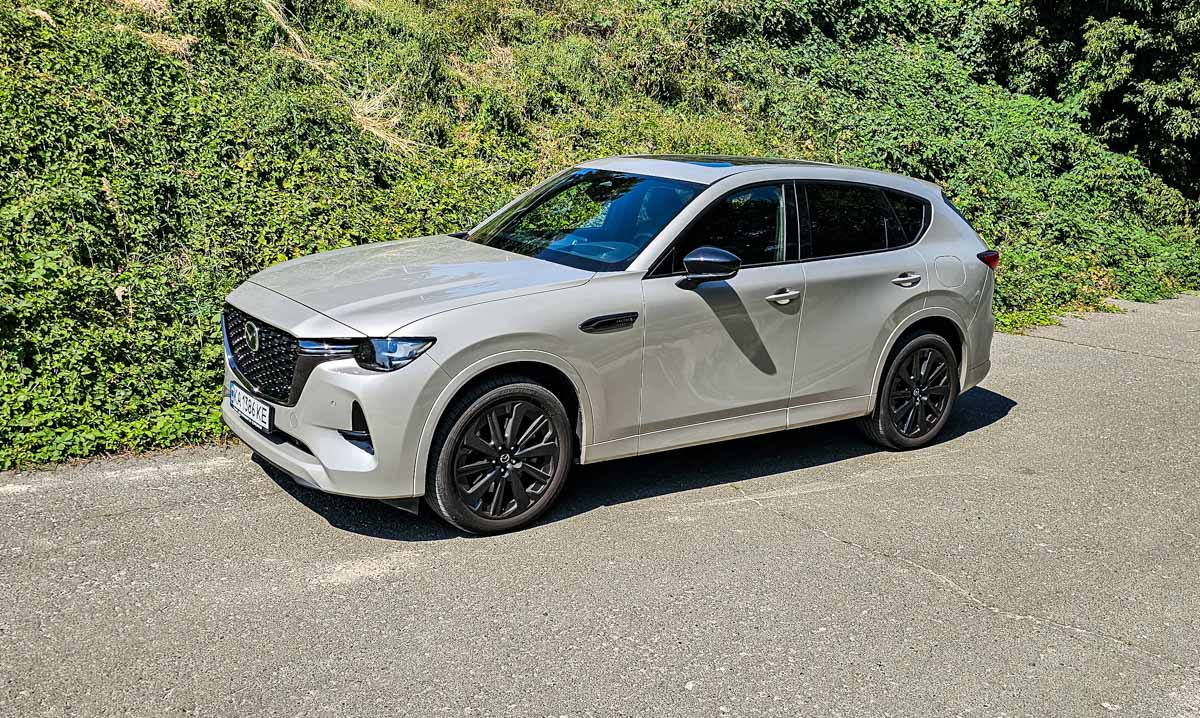
I don’t know about you, but I can’t shake the feeling that the design of the Mazda CX-60 reflects the characteristics of a sports roadster from the mid-20th century. Maybe it’s because of the disproportionately elongated hood and the stretched front section with the grille?
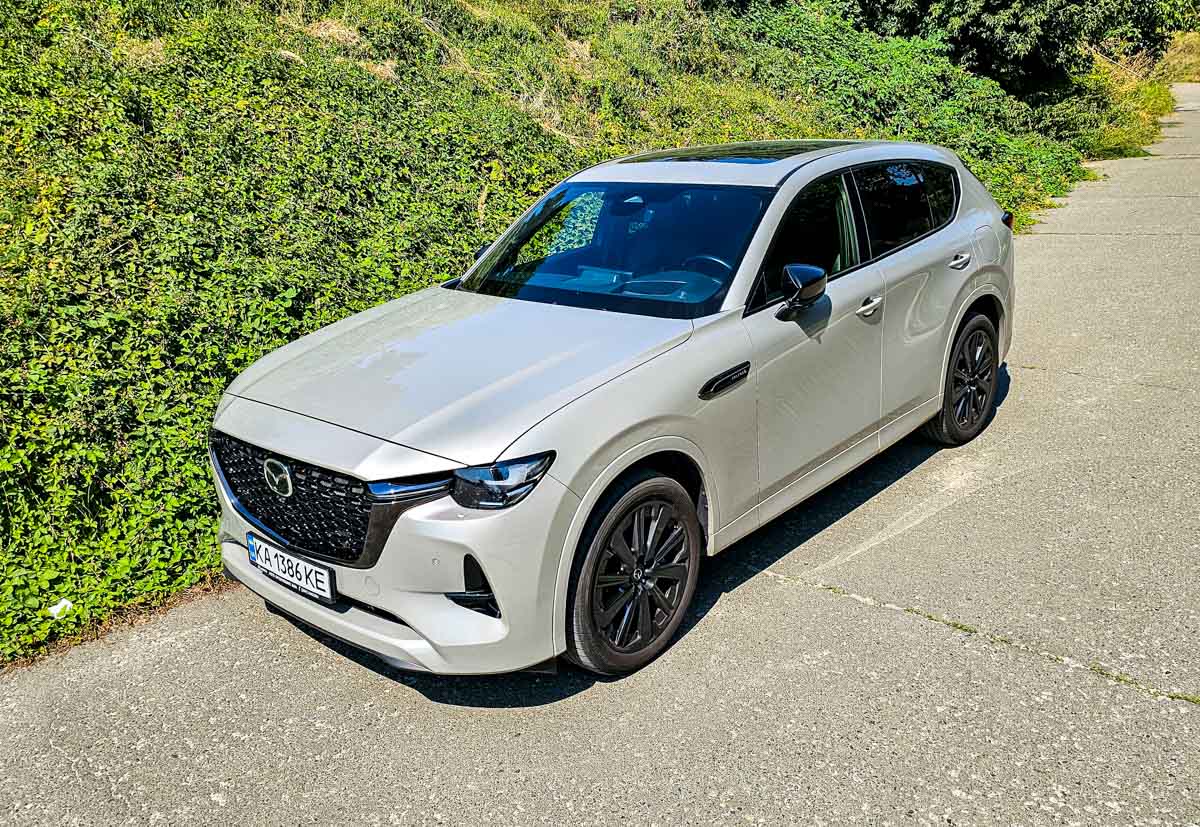
By the way, this isn’t just a design choice; the engineers had to extend the front end (or reduce the cabin space, which we’ll discuss later) to accommodate the required engine. It’s quite long. Under the hood of the CX-60 in the Premium-Sport configuration is a straight-six turbocharged engine, positioned longitudinally.
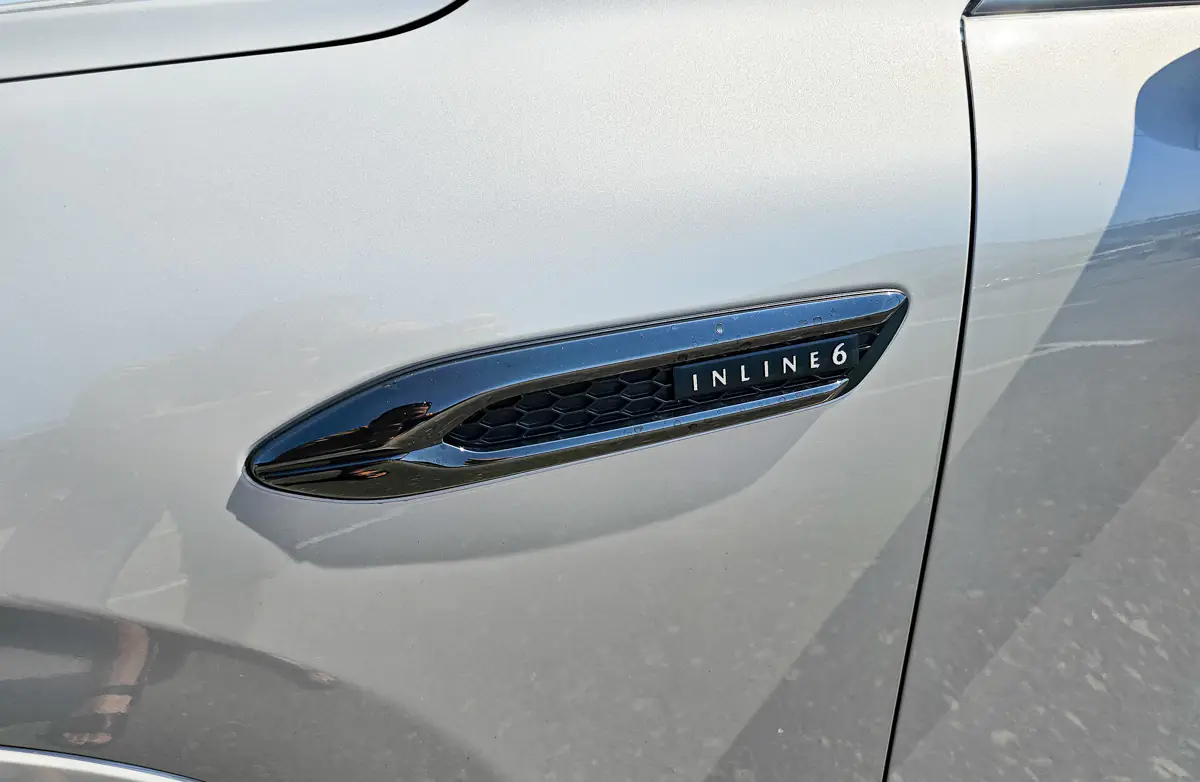
We’ll talk more about the engine later because I have a lot of interesting details and observations about it. However, the main influence on the design is indeed its length, as we have six cylinders arranged in a straight line along the axis of the vehicle, rather than across it like in most SUVs. Perhaps that’s why the primary drive for the vehicle is rear-wheel drive. This is active by default in both standard and sport modes. To achieve all-wheel drive, the front wheels are engaged separately through a special Offroad mode. This is quite an interesting transmission configuration that is directly related to the vehicle’s design and structure.
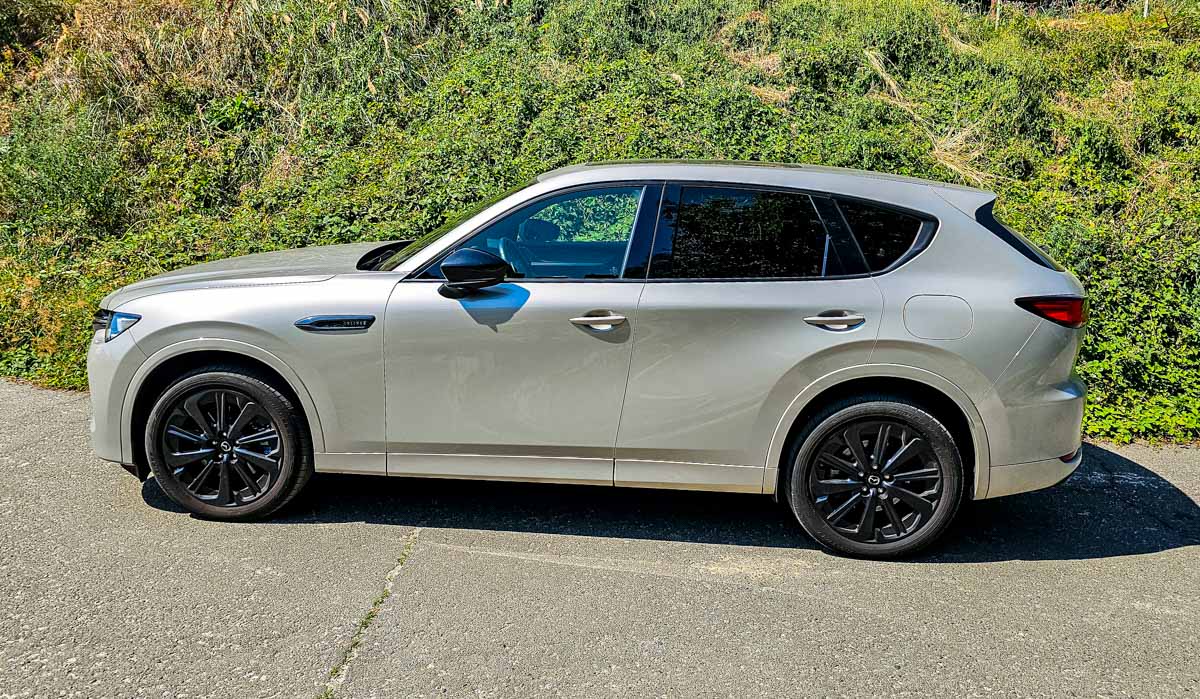
Headlight
The Mazda CX-60 in the Premium-Line and Premium-Sport trims is equipped with adaptive matrix LED headlights that automatically switch between high and low beams. The main headlights are controlled by an intelligent system using a camera located under the windshield. This system effectively cuts the light beam when oncoming or nearby vehicles are detected. It works quite well, and I haven’t noticed any drawbacks. Video on how the ALH adaptive lighting system with LED segments works:

In the base Exclusive-Line trim, the headlights are not adaptive, meaning there’s no intelligent light cutting feature; it only offers automatic switching between high and low beams. All CX-60 trims come with headlight washers as standard.
In addition to the low and high beams, the headlight units also incorporate parking lights, daytime running lights, and turn signals—all of which are LED. Besides the main headlight block, there are additional LED strips on each side that extend from the headlights to the grille. These serve as daytime running lights and highlight the lighting contour, giving the car a distinctive stylish appearance in the dark.
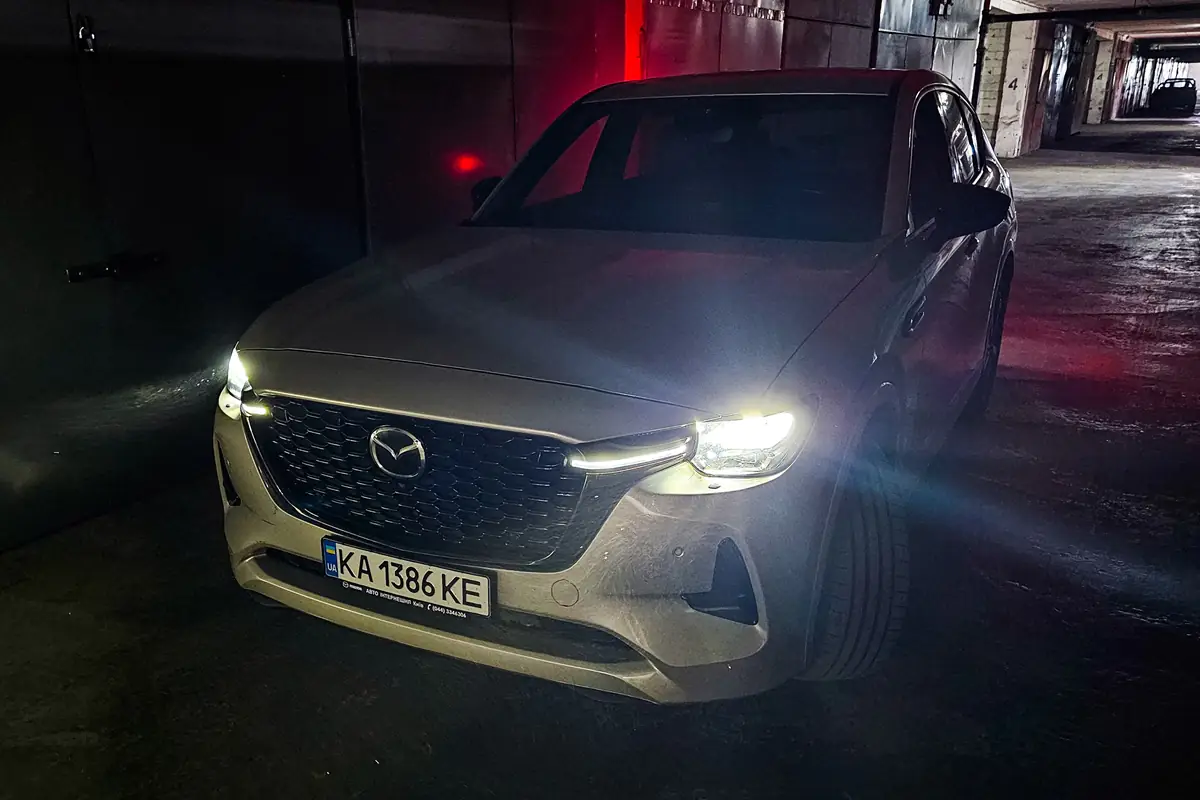
Side mirrors
There’s nothing unusual here. The European-style mirror elements have wide viewing angles and are equipped with LED indicators for blind spots in the upper corner. Each mirror housing also includes turn signal indicators and cameras for the surround-view system. The driver’s side mirror features an automatic dimming function to reduce glare from bright headlights. Additionally, both mirrors come with electric adjustment, folding, and heating systems. Furthermore, the parking system can automatically lower the mirror’s angle on the corresponding side towards the rear wheel when reversing closer to the curb, using driver gaze tracking.
Door handles and central locking
All the door handles are equipped with keyless entry. To unlock the car, you simply grasp the handle while keeping the key fob in your pocket or bag. To lock the vehicle, you just need to hold your finger on a designated sensor marked by a depression. When locking the central door, the side mirrors also fold in. In the car settings, you can set a timer for the automatic locking of the central door after you exit the vehicle.
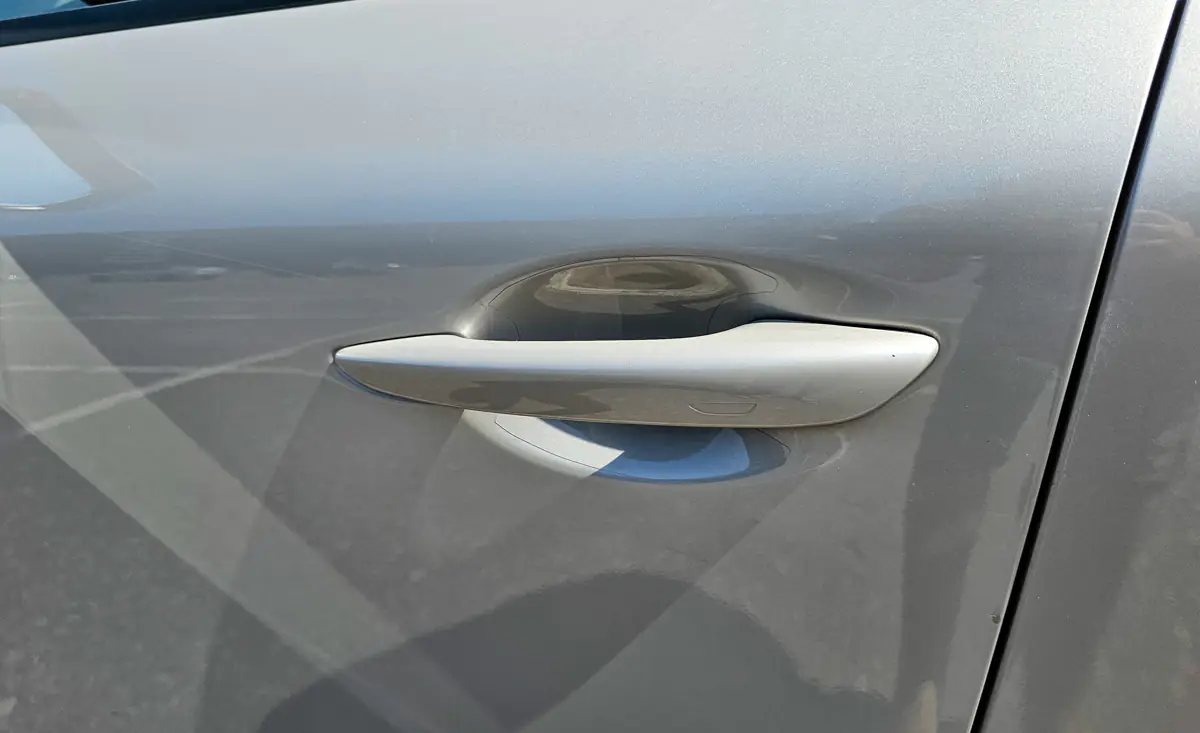
Wheels
All three trim levels of the Mazda CX-60 come with 235/50 R20 wheels featuring alloy brand rims. In the lower trims, Exclusive-Line and Premium-Line, the rims are silver. However, the top Premium-Sport version sports black rims to complement the overall sporty anti-chrome style.
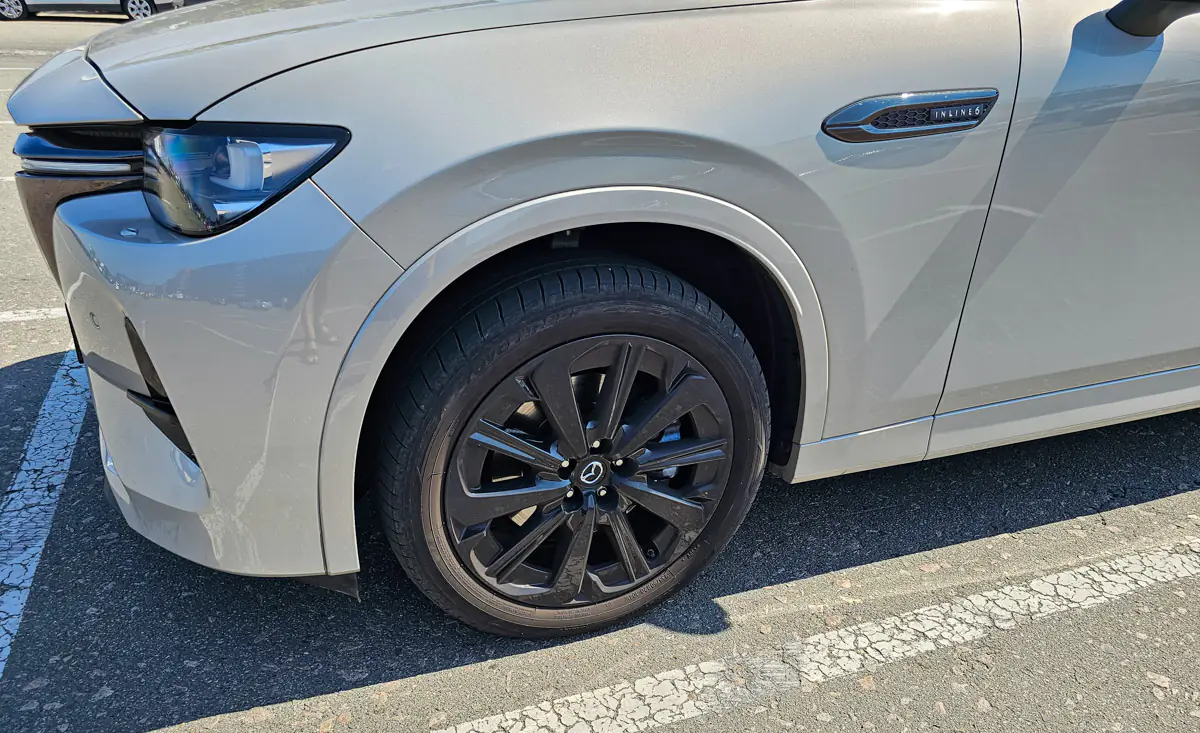
Taillights
That’s exactly what I mentioned earlier: the “petal-shaped rear lights” are a signature style of Mazda. The lights are completely LED, including the taillights, turn signals, and reverse lights. The brake light is duplicated by a block of red LEDs in the spoiler above. Overall, everything looks stylish and modern, and I have no complaints about functionality.
Read also: Škoda Karoq Review: Compact City SUV Focused on Comfort and Safety
Trunk lid, luggage compartment
The trunk lid features an electric drive for opening and closing. You can control the process using two buttons on the lid (one outside and one inside), a button in the driver’s area, the key fob, or by kicking your foot under the bumper (the “hands-free” function may not be available in some trims). A removable cover at the top of the trunk opens and closes along with the lid.
The trunk space in the CX-60 is indeed generous, offering a capacity of 570 liters. Of course, the useful space can be expanded by folding down the rear seatbacks. The interior walls of the trunk are lined with felt upholstery. On the left side, there is a storage compartment with a net. Additionally, there are buttons on the side walls for remotely folding the rear seatbacks.
The rigid floor cover is made of fiberglass and consists of two sections joined by flexible upholstery. Beneath the floor, there is a foam organizer with a spare tire, tools for changing a tire, and a subwoofer housed within the spare wheel. The trunk is illuminated by a single LED light, which is conveniently located at the top right. This light is bright enough to perform its function quite well, better than the average in the market.
Under the hood – 3.3L MHEV 284hp engine
We’ve already established that the main power unit of the vehicle is a 3.3-liter inline 6-cylinder turbocharged SkyActiv engine (Mazda’s direct fuel injection technology). However, this isn’t just any gasoline engine; it’s an MHEV (Mild Hybrid Electric Vehicle), which means it’s a mild hybrid. This technology replaces the conventional starter motor with a more powerful auxiliary electric motor, which is powered by a separate 48-volt battery that charges while driving through regeneration.
Unlike a PHEV (plug-in hybrid electric vehicle), with an MHEV, you won’t be able to drive solely on electric power. In a mild hybrid, the electric motor serves only a supportive function. It adds up to 17 Nm of torque to the main engine during acceleration and while driving. This slightly boosts the engine’s power and reduces fuel consumption. I’ll discuss how all this works in real-world use a bit later.
I noticed a couple of things under the hood. First, there’s sound insulation on the inside of the hood. Second, the engine is fully covered by a plastic shroud that is secured with two quick-release latches, making it easy to remove without special tools. However, even without taking it off, I found convenient access to the washer fluid and coolant fill caps. But where’s the battery? I couldn’t find it; I guess I’ll have to remove some other panels closer to the windshield to locate it.
Read also: Škoda Kamiq 2024 Review: Is This Compact SUV Crossover Worth Your Attention?
Mazda CX-60 interior and cabin
Inside the cabin, the manufacturer continues to strive for a premium car feel, and they partially succeed. Overall, the design is modern, the ergonomics are well thought out, and it includes all the contemporary systems that ensure comfort and safety, with quality materials used for the finishes. However, there are also clear compromises present, which I will elaborate on in more detail.
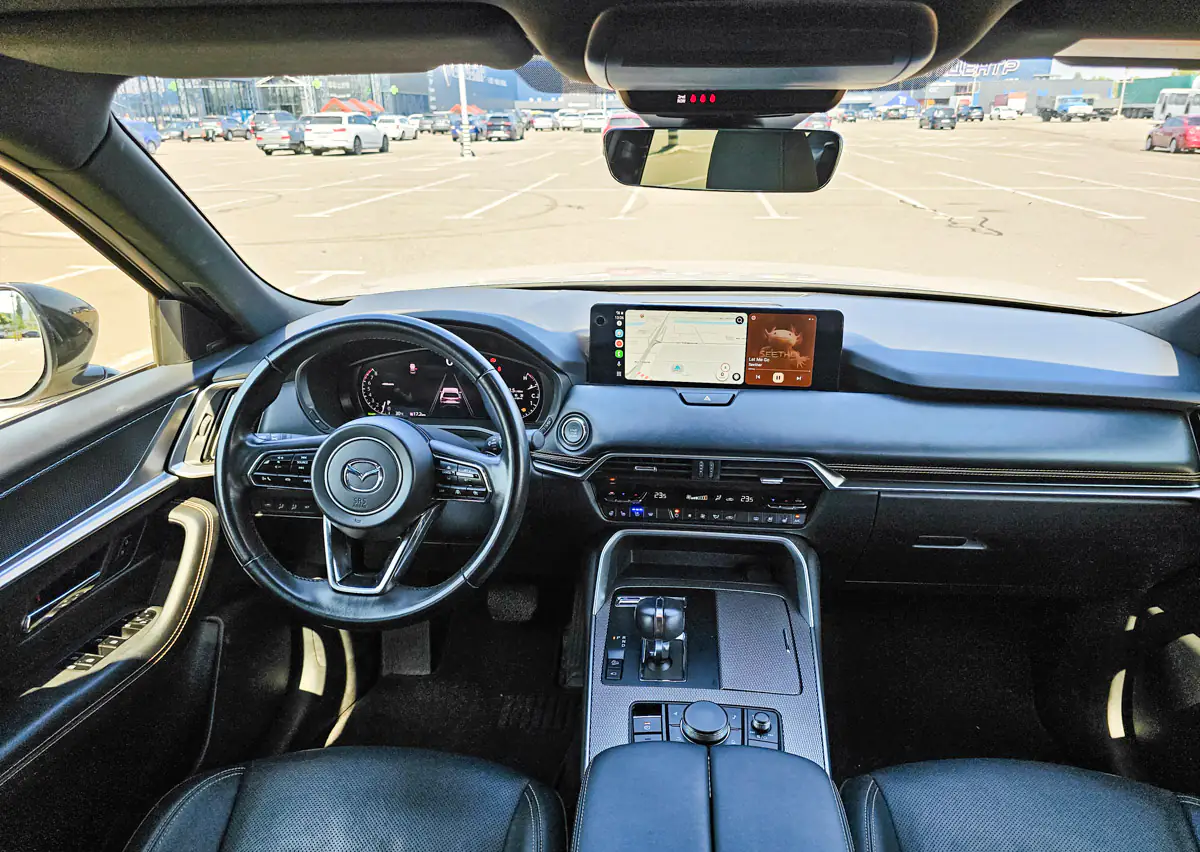
While I had no objections regarding the exterior of the Mazda CX-60—it’s absolutely top-notch—I do have some questions about the car’s interior. If we consider the price of the cheaper trims around $40K, then these questions might seem unjustified; the quality and equipment level of the cabin fully align with the cost and even slightly exceed class standards. However, when examining the interior in the context of the price nearing $60K for the top-tier Premium-Sport version, I start to feel a bit disappointed, as I expect more for that kind of money. Perhaps I’m being overly critical? If you think so, feel free to argue with me about it in the comments!
Door cards, door handles
The interior door trim is the first ambiguous point I need to highlight. While the materials seem to be of decent quality—the soft vinyl at the top, the textured plastic section, and the synthetic leather-wrapped handle are all fine—the impression is somewhat tarnished by the plastic panel above the handle. The matte silver part, in my opinion, looks very cheap, and I worry about its durability; it’s already somewhat scratched from testing, and this is likely to continue. The section of the panel with the “mesh” pattern also doesn’t contribute to a premium feel. Additionally, this plastic is not very pleasant to the touch and feels thin; when tapped, it gives the impression of emptiness behind it. It’s a bit disappointing…
Regarding the functionality of the doors, all of them are equipped with window lift buttons and steel lock handles with latches. Additionally, the driver’s door features controls for the central locking, all the window lifts, and the mirror adjustment panel.
One unusual aspect of the CX-60 is the placement of the main speakers in the audio system within the doors. Typically, manufacturers place these in a bulge in front of the pocket, but here they are installed in the central part, right before the handle. Consequently, the diameter of the speakers appears small in relation to the size of the grille, but I can say upfront that this does not impact sound quality.
Front seats
The driver’s and front passenger seats are quite good and comfortable, so I have no complaints in this regard. The main upholstery material is high-quality Nappa leather, complemented by eco-leather inserts. At first glance, the side support may seem minimal, but once you sit in the seat, you sink slightly into the cushions, and the support works exceptionally well overall.
I also want to highlight the slight extension of the lower seat cushion. Despite the fact that most of the thigh is not supported, sitting in the seat is quite comfortable. Importantly for me, the seats come with lumbar support that is adjustable for depth. Overall, all seat position parameters can be adjusted using three joysticks located on the plastic side panel at the bottom.
The seat memory function is also included, which is integrated with the positions of the mirrors and the steering column. You can save the driver’s seat settings in one of two slots using a dedicated button located below the dashboard on the left side of the steering wheel. Additionally, this parameter is linked to your driver profile and the facial recognition feature—I’ll explain more about this later.
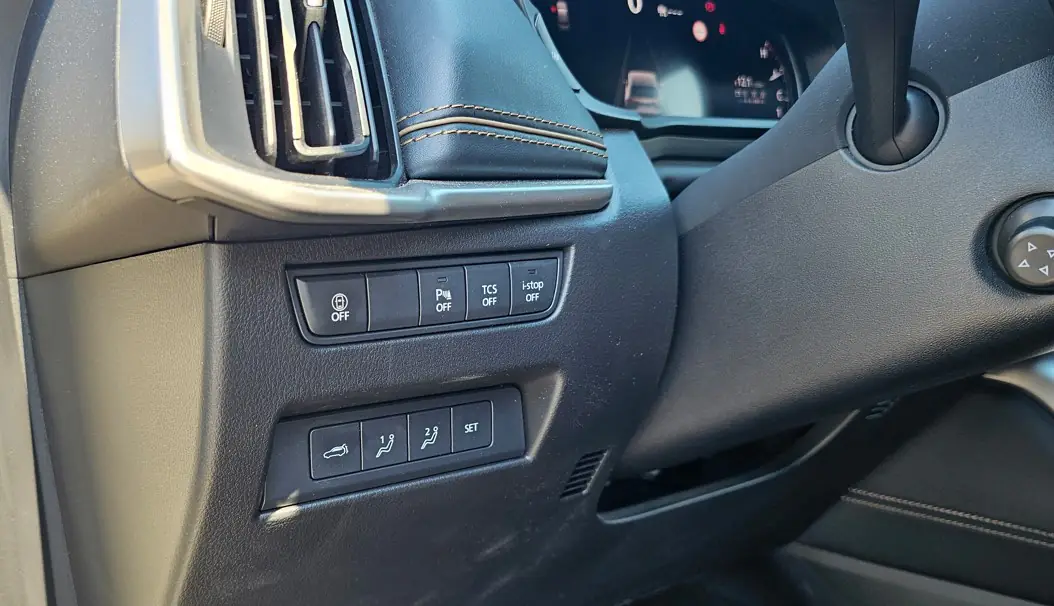
Absolutely, the front seats are equipped with heating functions, and they also feature ventilation for cooling—this is a killer feature in the summer, which, in my observations, seems to be particularly appreciated by men. The seat ventilation in the CX-60 operates quite gently and unobtrusively. I can say this in comparison to my personal car, where my wife complains about feeling like she “sat in a puddle,” so she doesn’t use the function (though I’m perfectly fine with it). However, in the CX-60, she happily activates the ventilation for the passenger seat from time to time.
Rear seats
The rear seats have a similar design and use the same materials as the front seats. Unfortunately, there is no ventilation function, but there is heating. We have 2 full-fledged non-adjustable passenger seats and a third in the middle – if you really need it. All seats are equipped with seat belts and head restraints.

If there is no passenger in the middle, you can fold down part of the backrest to transform it into an armrest with cup holders.
From the perspective of getting into the rear seats, there aren’t any major complaints. However, I want to point out that the legroom in the back of the CX-60 is noticeably less than what you might expect in a 5-meter SUV. I compare this parameter with my personal vehicle, which has similar overall dimensions and offers ample space for rear passengers. It’s worth mentioning that the length of the hood in the CX-60 has been increased without compromising the trunk volume, leading to a loss of interior space—specifically, while the front row is comfortable, the rear lacks a bit of room. Just take a look for yourself:
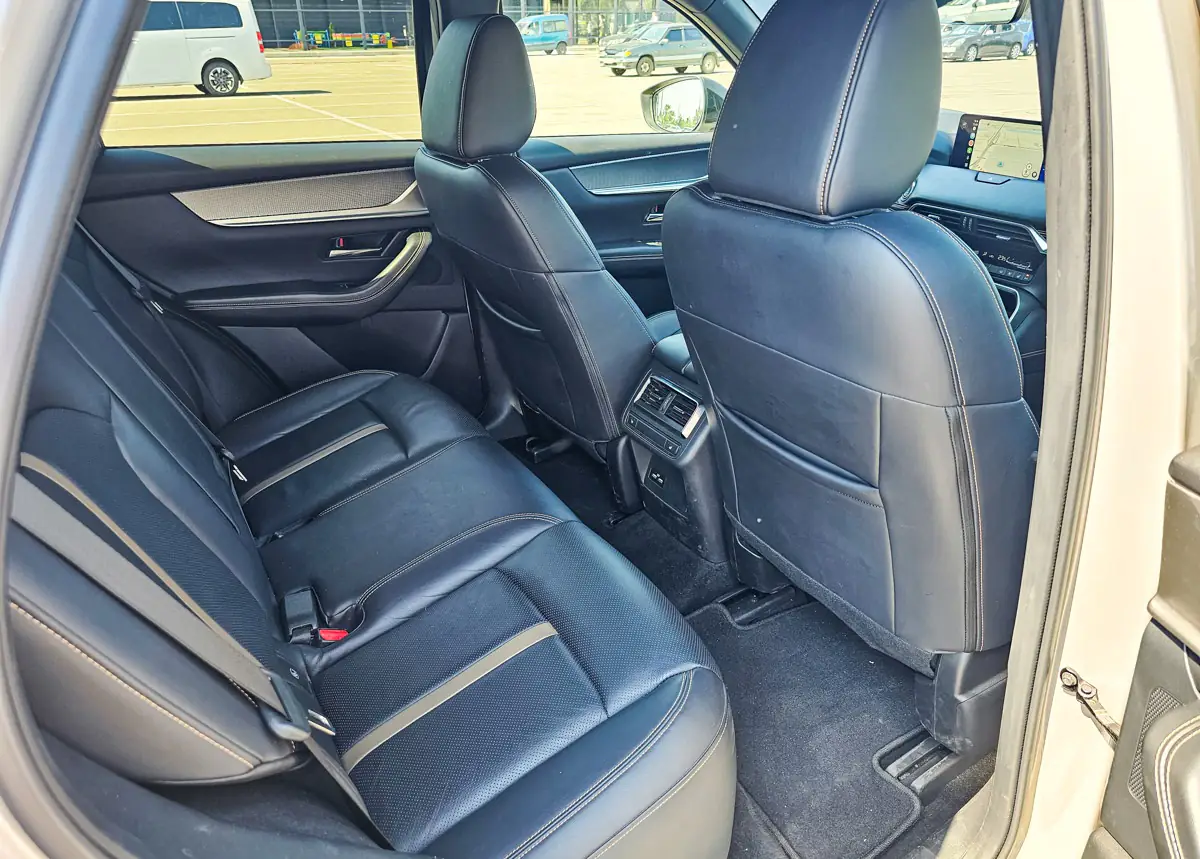
For instance, when the convenient entry feature activates and the driver’s seat moves back, there is barely any space left in front of the rear seat, to the point that it can actually pinch the legs of a passenger if they haven’t managed to exit the vehicle in time. Therefore, I would advise against seating a tall person behind the driver. Disabling the “convenient entry” feature is also not an ideal solution. But it is what it is, and I feel it’s important to mention this.
Dashboard and storage compartment
The dashboard, overall, is quite nice. It features a layered design with three tiers, which is currently trendy among many manufacturers. However, I feel that if the upper section were upholstered in leather, it would convey a more luxurious feel; it seems the manufacturer has missed the mark slightly in reaching the premium class here. So, the top is made of standard quality thermo-vinyl with a soft backing. The middle layer is wrapped in artificial leather with quality stitching and a light leather strip insert, which looks decent. Below that, there’s a thin molding made of the same silver matte plastic we saw on the doors, and further down is the standard textured plastic.
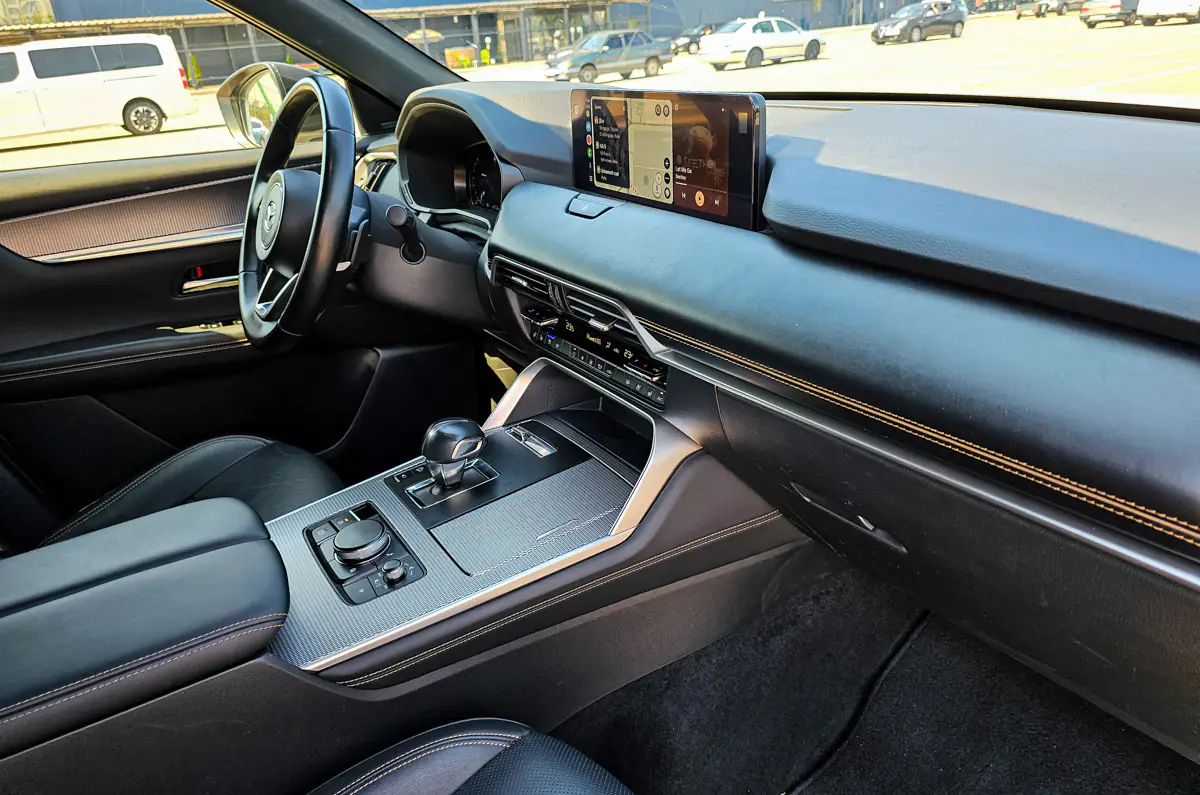
There’s only one storage compartment here—the standard glove box in front of the passenger seat. This is also a bit strange and somewhat inconvenient. For instance, in my Edge, there’s an additional small compartment for odds and ends below the left knee of the driver, as well as a fairly large covered compartment on top. However, we can assume that Mazda’s designers opted to maintain the cohesive design of the dashboard.
Steering wheel and steering column
The steering wheel follows the typical Mazda style. It’s round, with three spokes; the left side features buttons and joysticks for multimedia playback control, while the right side is dedicated to adaptive cruise control functions. The buttons are well-spaced due to a horizontal ridge on the top row and indentations on the lower buttons, making it generally easy to use after a brief adjustment period. The steering wheel is wrapped in natural leather and includes a heating function, adding to the comfort during colder weather.
The steering column features electric adjustment in all directions, controlled by a joystick located below the steering wheel. Additionally, there are two paddle shifters for manual gear changes and two traditional levers for controlling the lights and windshield wipers.
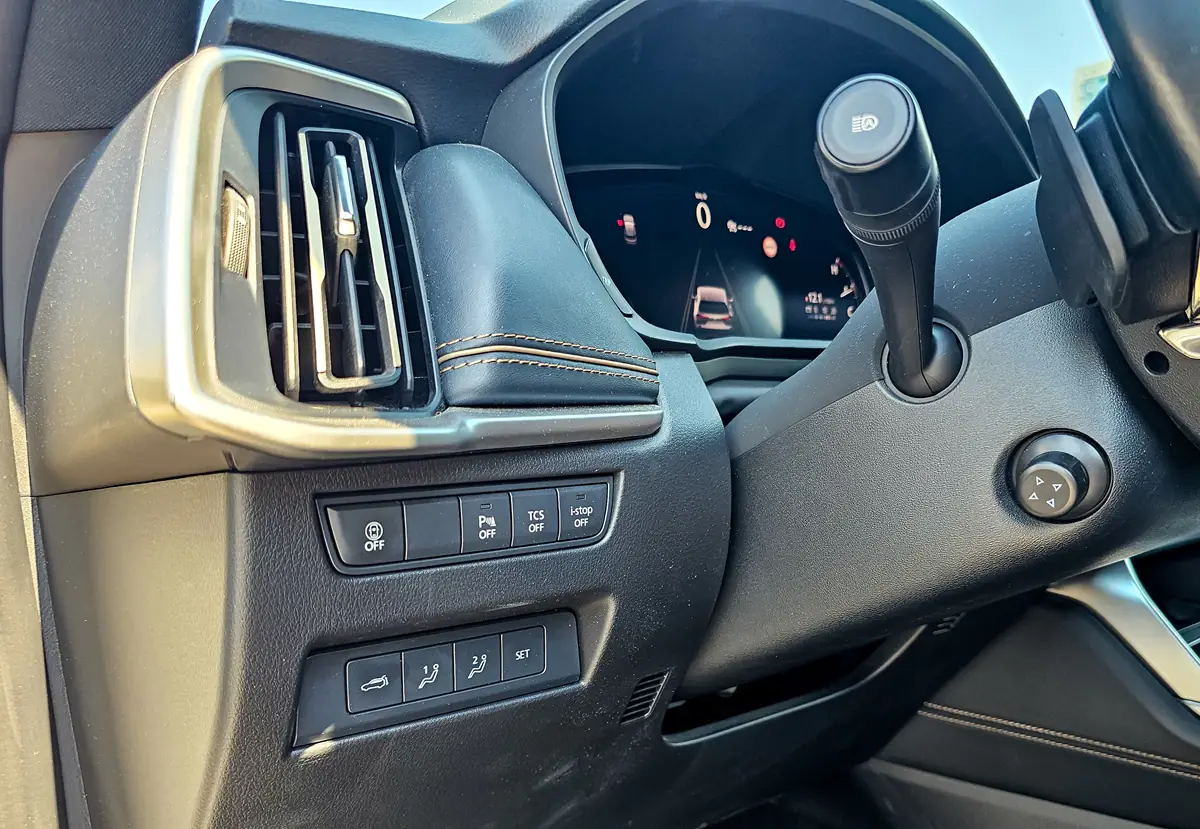
Speaking of windshield wipers, it’s worth noting that the windshield washer system here is somewhat unusual—the nozzles that spray fluid onto the windshield are located not on the hood, but directly under the wipers. The washer fluid is delivered through flexible hoses right to the wiper area. It’s quite original.
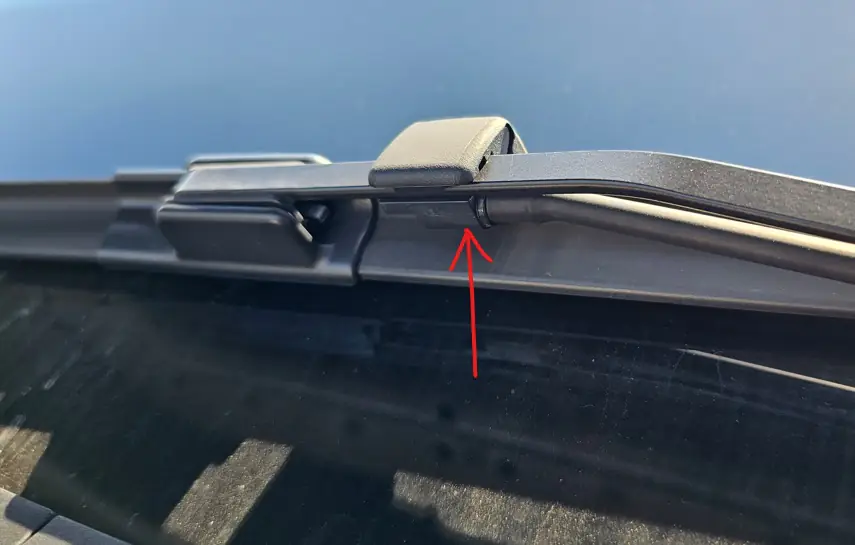
Instrument panel
A modern instrument panel should be fully digital. If you agree with this statement, the Mazda CX-60 fully meets your expectations. It features a 12.3-inch LCD display that shows all the necessary information for the driver. The screen is of high quality—clear, contrasty, and bright. No complaints here.
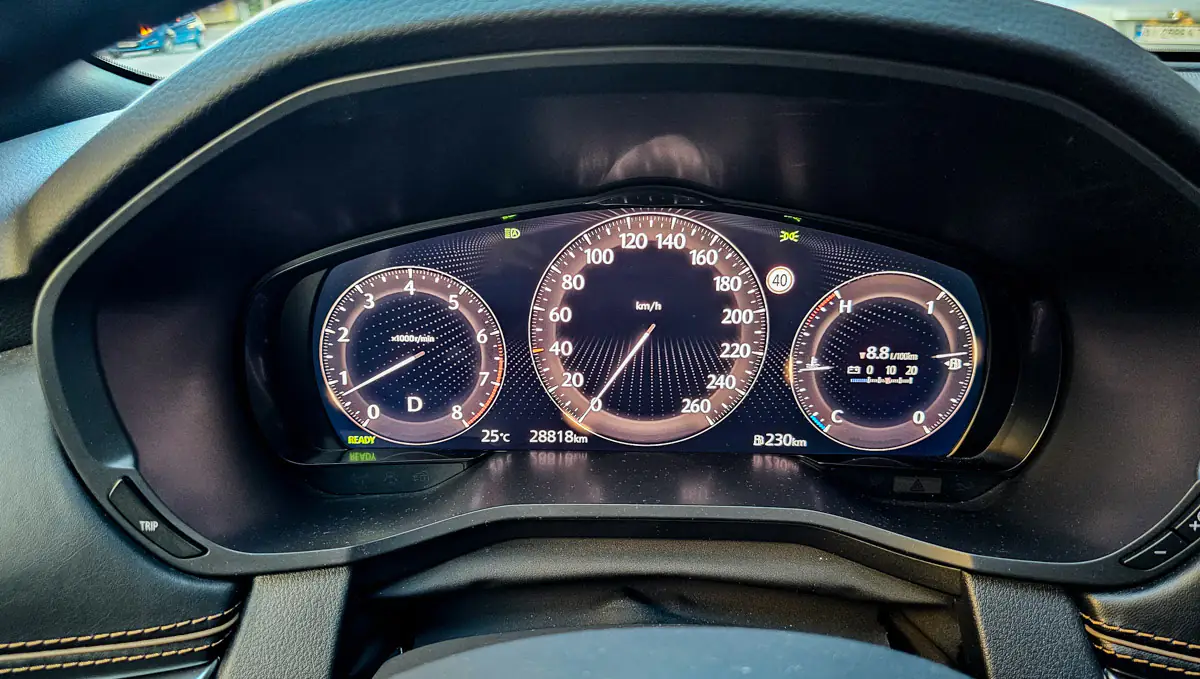
Depending on the activated modes and safety features, the instrument panel offers several different layouts, including classic ones with a round speedometer and tachometer, as well as more futuristic options with a digital speed display and radar data showing surrounding vehicles or obstacles when adaptive cruise control is activated. The instrument cluster can also read road signs using a camera located under the windshield, displaying information about speed limits along your route.
The car is also equipped with a heads-up display that projects essential information onto the windshield, including the current speed, active speed limits, and navigation maneuver alerts.
Multimedia display and entertainment system
The main component of the infotainment system is a quality 12.3-inch display located in the center of the dashboard. In reality, despite its seemingly large diagonal, the display isn’t very big—it’s just very wide rather than tall. Overall, though, it’s sufficient for all the typical functions of a car system. Personally, I’m not a fan of large screens in vehicles; I find they can be more distracting while driving.
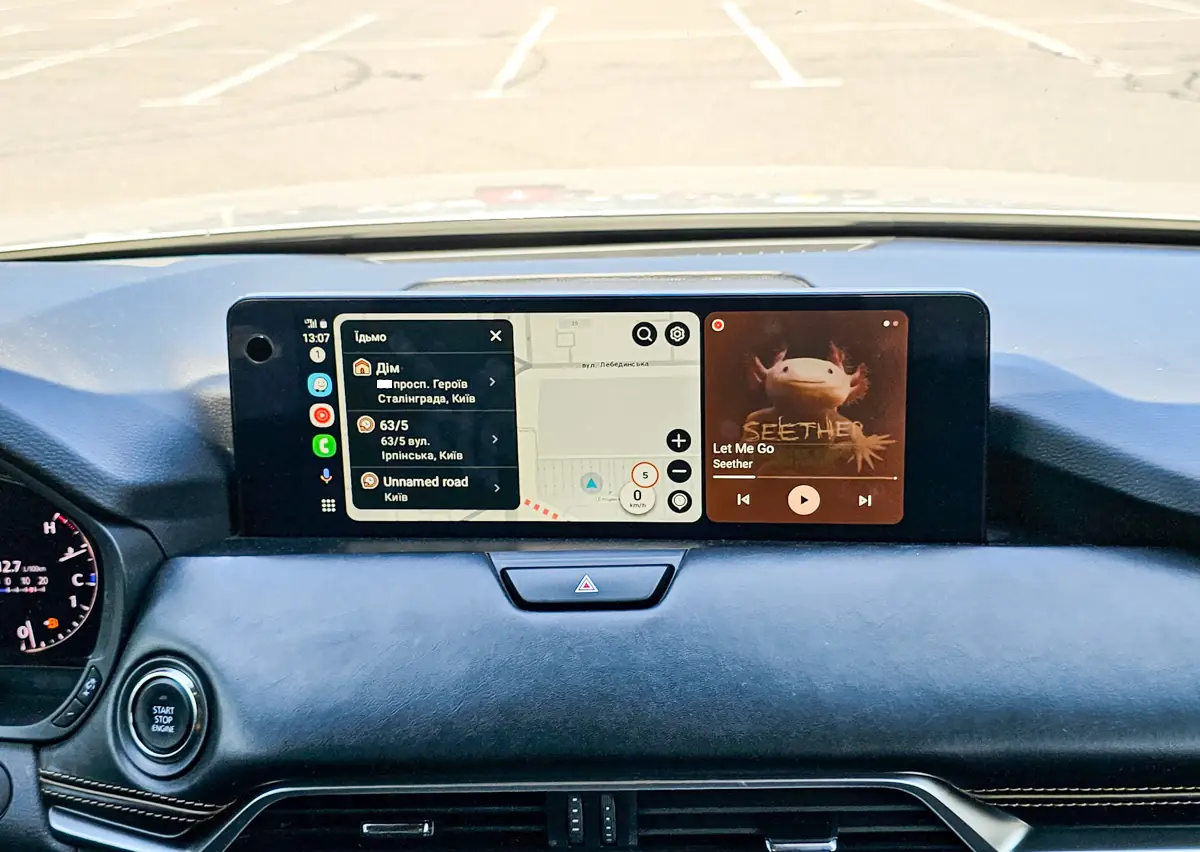
A key feature of Mazda vehicles (probably all of them, but I can’t say for sure) is that this display has a touch sensor, but touch and gesture controls are only available for Android Auto and Apple CarPlay, not for the built-in car interface. Instead of touch controls, there’s a mechanical panel with knobs, joysticks, and buttons on the center console. The main large dial allows you to navigate through the menus, and pressing it selects or confirms an option. You can also move left or right by pressing the sides. There’s a separate smaller joystick-dial for controlling the volume and music playback, along with a few quick-access buttons and one customizable button for your favorite function.
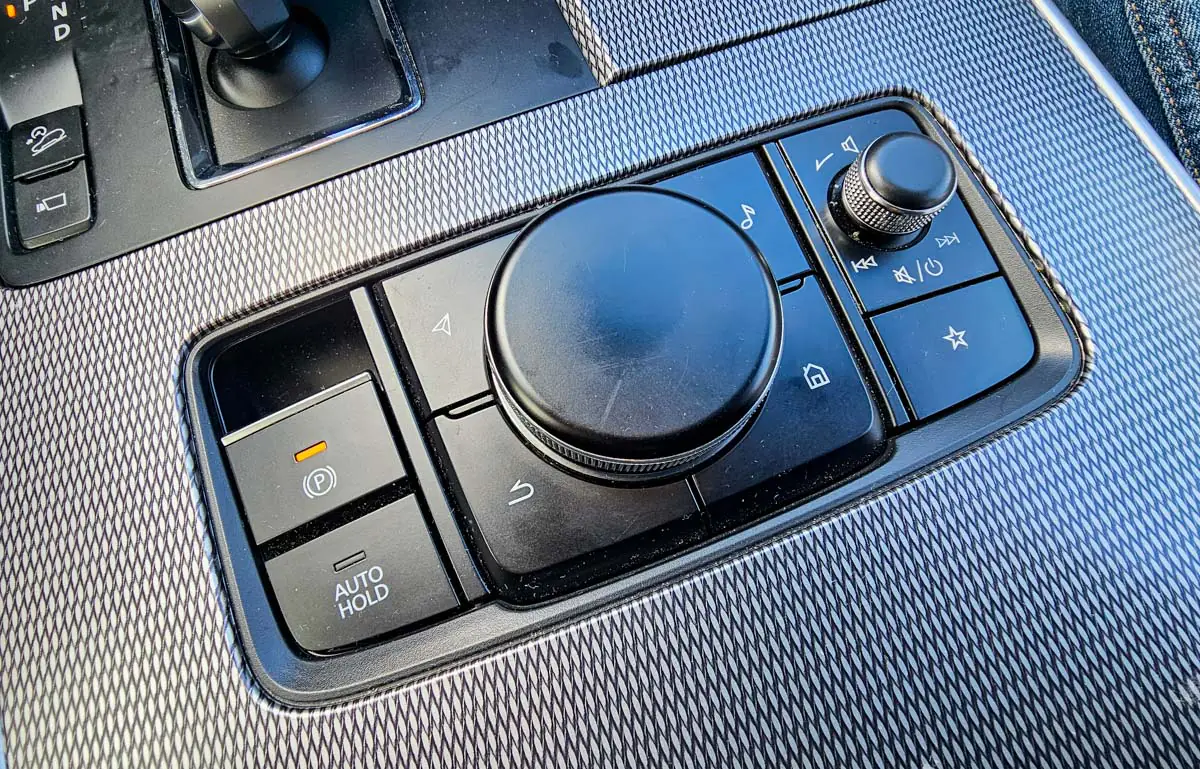
To justify the tactile method of controlling the entertainment system, I can point out that the controls are conveniently located right under your right hand, and after a short adjustment period, you’ll likely be able to use them by touch. However, it still feels like a strange decision, probably dictated by safety considerations that seem a bit overblown. Personally, I don’t agree with it, but I can accept it, that’s fine.
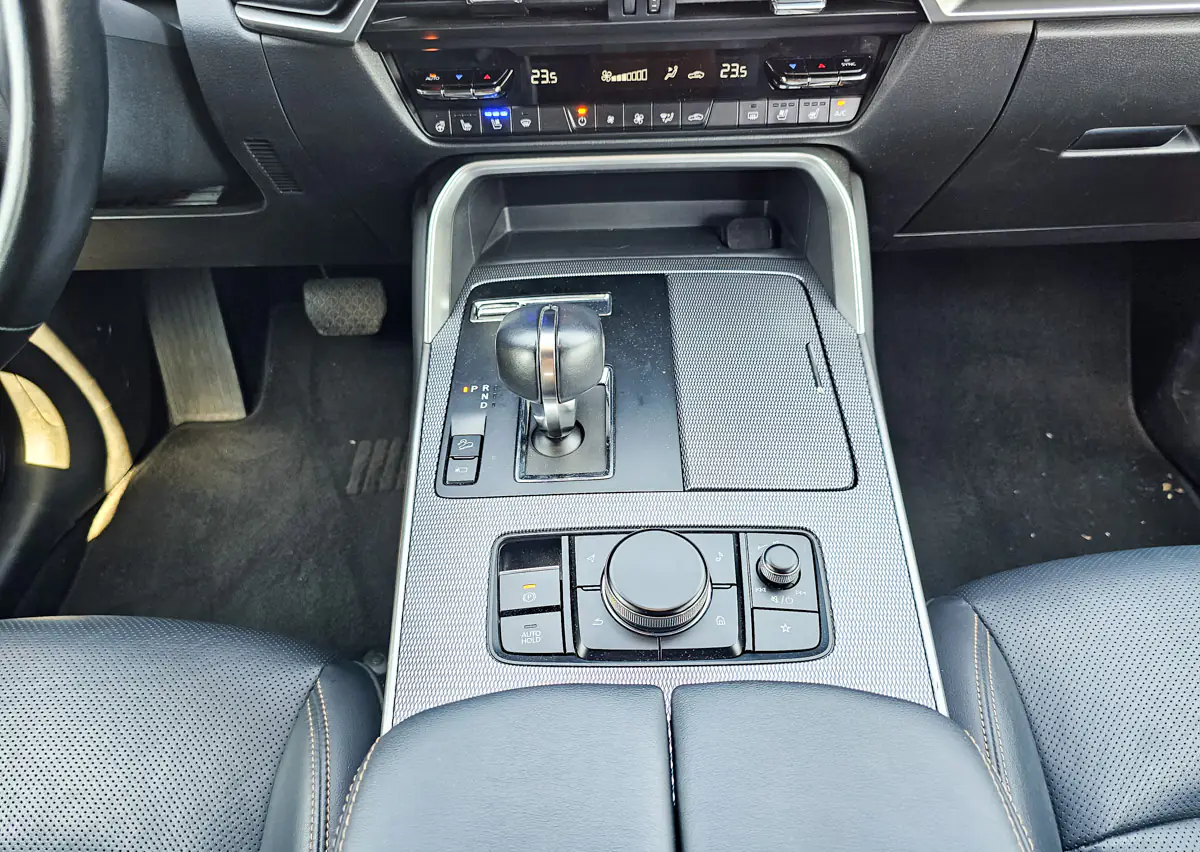
Overall, I see the built-in system mainly as a menu for adjusting and storing the car’s basic settings. You can also connect an Android smartphone or iPhone to the car. After that, all navigation functions, music playback, and phone calls via the hands-free feature through the loudspeaker are handled by the Android Auto and Apple CarPlay interfaces, which allow for touch control.
The key feature of the infotainment system is driver personalization. If you look closely, you can notice a camera hole on the left side of the screen, likely infrared or ToF. There’s also a sensor visible on the right side, and there may be other sensors as well, but I didn’t pay much attention to them. The main point is that these devices help the car recognize your face when you get into the driver’s seat and automatically apply your personal settings for the seat and mirrors. You can explore some features of the infotainment system in the gallery below:
Mazda CX-60 audio system
The most expensive versions of the Mazda CX-60 come equipped with a Bose audio system featuring 12 speakers and a subwoofer located in the trunk inside the spare wheel. I have no complaints about the sound quality of the system; it’s excellent, and I was quite satisfied. The sound is very clear, rich, and immersive. The multimedia system menu includes additional settings to enhance the quality and personalize music playback..
Climate control panel
The Mazda CX-60 features a dual-zone climate control system with separate settings for the driver and front passenger. It also includes functions for heated front seats and seat ventilation. As for the control panel, it’s located centrally under the dashboard and is equipped with physical buttons, which I believe is a smart choice—I’m not a fan of touch controls for climate settings.
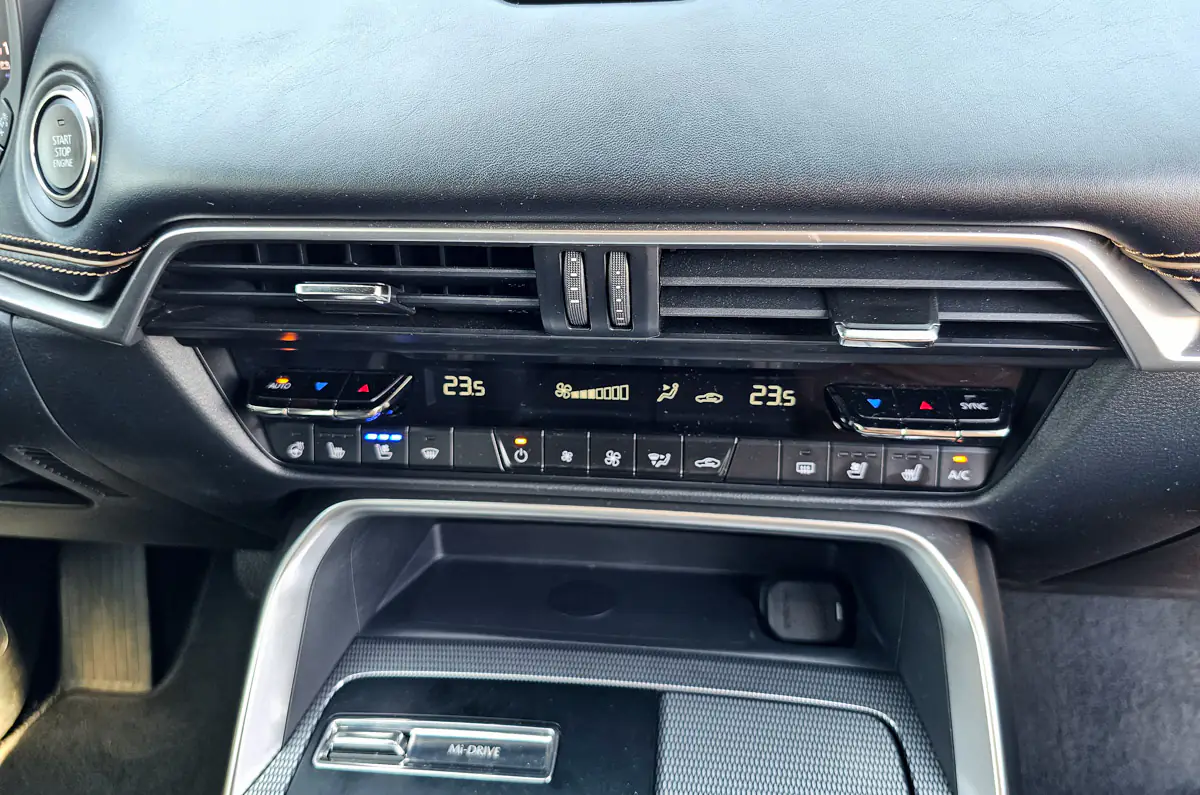
There’s a separate console for rear passengers with adjustable climate control vents located in the center between the seats, as well as buttons for activating the rear seat heating.
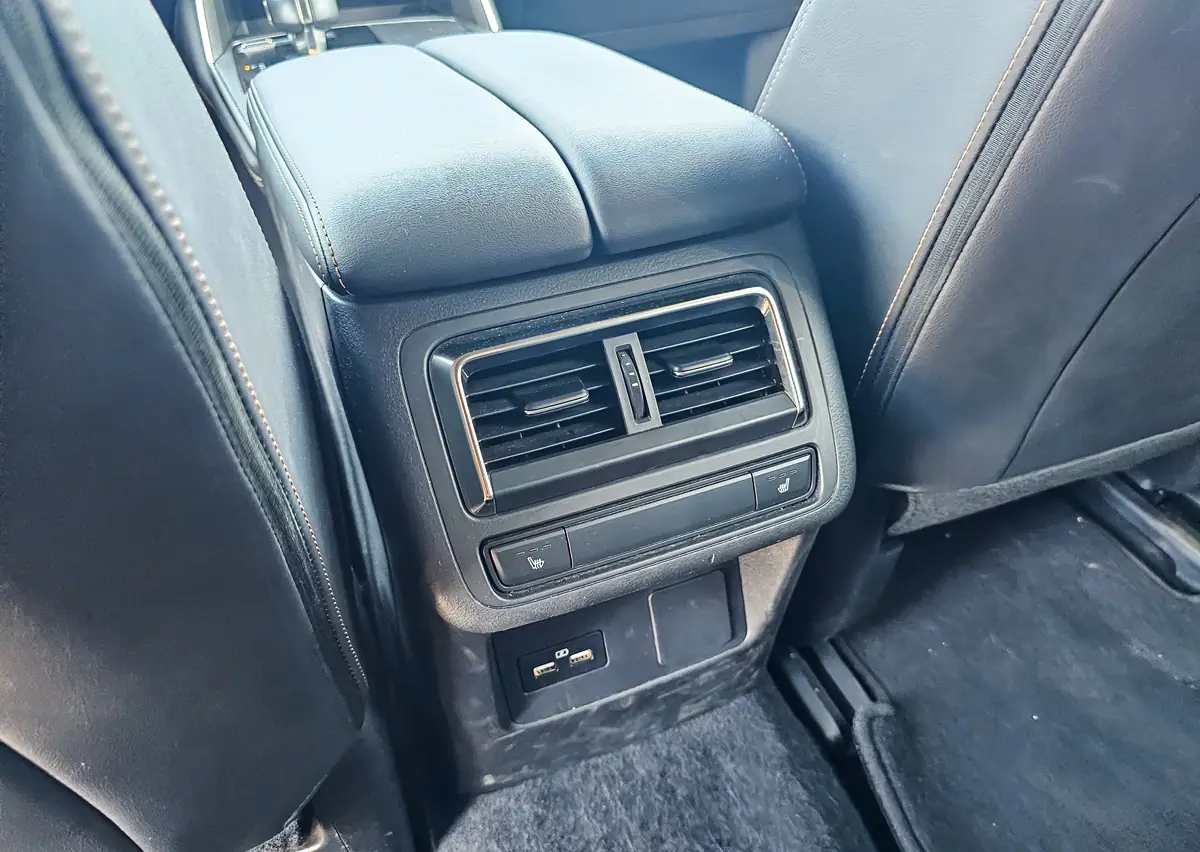
Smartphone connection, charging and USB
Under the dashboard, there’s a small compartment for a smartphone that includes wireless charging. Additionally, there’s a 12V socket on the right side. I was surprised to find that there isn’t even a single USB port here.

However, it turns out there’s a second smartphone compartment under the central armrest between the seats, equipped with two USB-C ports. In my opinion, this is a very questionable decision, as the manufacturer opted out of a traditional deep drawer, which I think would have been very useful here.
By the way, keep in mind that in the 2023 test vehicle, the Android Auto function is only available with a wired connection (so I had to use my own wireless AA dongle), while Apple CarPlay supports wireless connection by default. According to a representative from Mazda, this issue has been addressed in the new CX-60 modifications, which now also support wireless Android Auto. However, I didn’t have the opportunity to verify this. Additionally, there are two USB-A charging ports located on the climate control central console for rear passengers.
Center console and gear lever
The center tunnel between the front seats appears very wide. However, there isn’t much storage space here. Additionally, there’s still a lot of that cheap-looking patterned plastic, which, in my opinion, detracts from the overall positive impression of the interior. Behind the smartphone compartment, there’s a closed compartment with two cup holders. The gear shift lever is mounted on a short stem and is trimmed with genuine leather. In front of it, there’s a switch for driving modes—standard and sport (for the two-wheel drive) or all-wheel drive and towing mode.
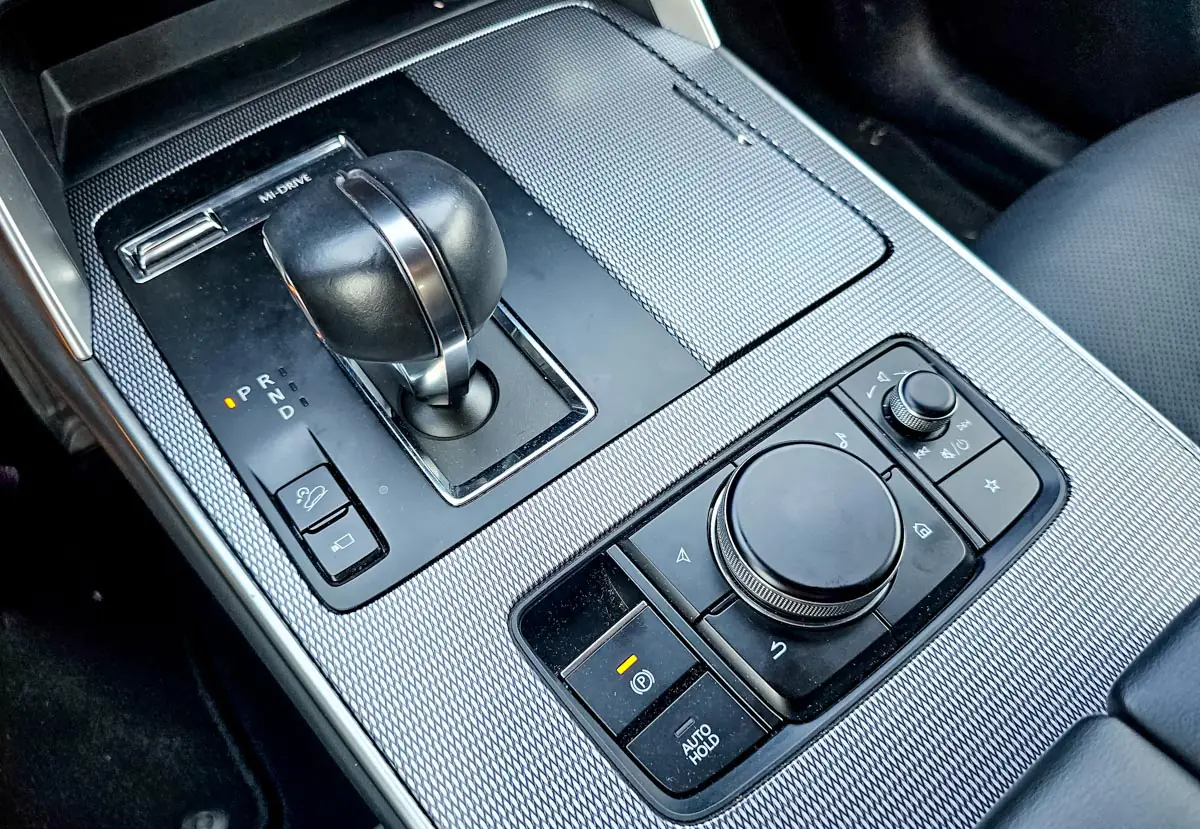
Next is the control panel for the infotainment system, which I’ve already detailed. Following that is the center armrest, covered in synthetic leather, which opens with two lids to provide access to a compartment for smartphones featuring two USB-C ports.
Ceiling, center mirror, upper console, interior lighting
In the Mazda CX-60 Premium-Sport, we have a trendy feature found in premium vehicles: a black ceiling. I’m not sure what color the ceiling is in other trims. There’s also a pocket for storing sunglasses. The central mirror has an automatic dimming function, and its position can be adjusted manually.
The interior lighting is provided by four LED lights near the overhead handles and two lights under the sun visors. Additionally, our test vehicle is equipped with a large panoramic sunroof with electric control. It’s worth noting that this is not a panoramic glass roof that spans the entire ceiling, but rather just a sunroof.
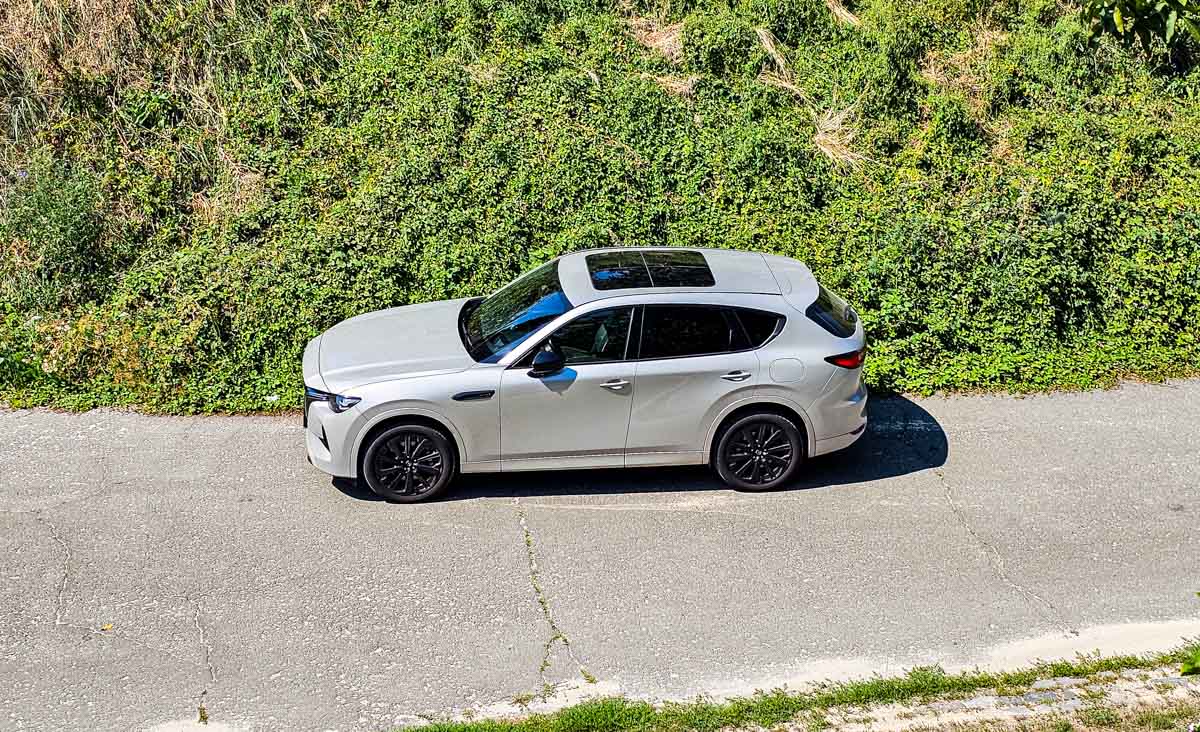
“Ambient light” – interior lighting
Interior lighting is present, but in my opinion, it’s implemented at a very basic level—just footwell lighting for the driver and passengers and light strips in the doors. It hardly qualifies as premium; in fact, it’s even worse than in the budget Škoda Kamiq, which also features dashboard lighting. Overall, I don’t understand Mazda’s frugal approach to ambient lighting in the cabin. Competitors offer much more interesting solutions.
Read also: Self-Driving Cars: How Long to Wait for the Revolution?
Impressions of operating and driving the Mazda CX-60
Comfort and safety
When it comes to comfort, it’s a very subjective and multifaceted issue. It depends on what you personally associate with comfort. For example, many drivers and passengers value a soft suspension in cars. If you share this opinion, the Mazda CX-60 might not be for you. The suspension here is quite stiff—so much so that it feels comparable to a shopping cart. This car seems to be designed for Japan’s perfect roads. On our less-than-ideal roads, you’ll physically feel every bump or even crack in the asphalt. Personally, I’m a fan of firm, sporty suspension, but even for me, it’s a bit too much to feel it through my entire body all the time. Sometimes you just want a bit more softness while driving. Overall, such a suspension could be both an advantage or a drawback, depending on your preferences. Ideally, a pneumatic system could have been used here to adjust the stiffness dynamically.
By the way, given the stiffness of the suspension, I’m not even sure if it’s worth taking the CX-60 off the city roads onto rough terrain, like dirt or forest roads. It would be a real challenge for your spine, or you’d have to drive extremely slowly. I wouldn’t recommend it.
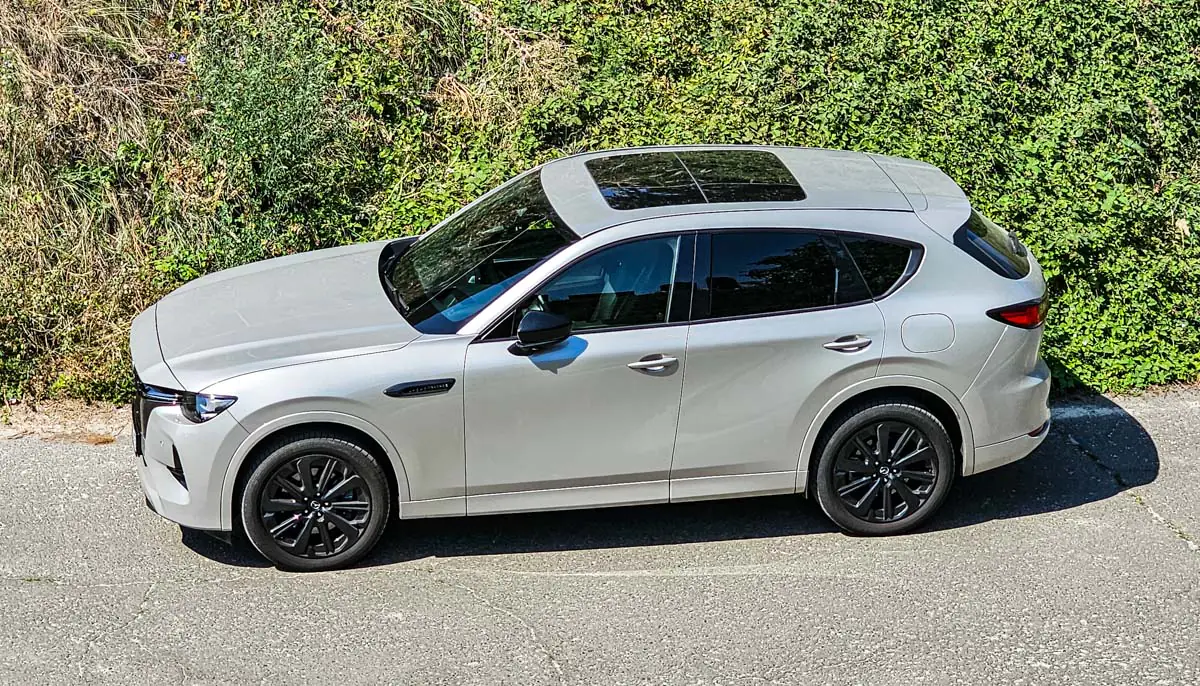
The second aspect of comfort is the smart electronic assistants, which are implemented at a top-notch level in this car. Automatic headlights, lane keeping assist, blind spot monitoring, adaptive cruise control with stop-and-go functionality, parking assist, cross-traffic alert when reversing, and a 360-degree camera system. A particularly cool feature of the infotainment system is the ability to create a driver profile and automatically apply personal settings through facial recognition when you sit in the car. All of this helps you focus on driving without being distracted by minor details, which directly impacts safety, wouldn’t you agree?
Another important aspect that defines comfort in a car is cabin sound insulation. In the Mazda CX-60, it’s not as good as one might hope. On smooth asphalt, the situation is somewhat acceptable, though the noise level is still quite high, especially when driving over 100 km/h or during acceleration. Although, sometimes it’s pleasant to hear the sound of the 6-cylinder turbo engine, so this can be forgiven. However, on rough roads, the cabin trim and components behind the panels produce too many unnecessary noises—creaks and rattles, for example, something quite loudly vibrates under the dashboard. This really detracts from the experience, as it’s not the level of refinement you’d expect from a $60K vehicle.
Of course, the CX-60 is equipped with all modern safety systems: a full set of airbags in the front, rear, and sides, driver attention monitoring, stability control, emergency braking systems, hill start assist, hill descent control, tire pressure monitoring, and much more.
Dynamics
The dynamics of the Mazda CX-60 Premium-Sport are indeed impressive for a large SUV. With 284 horsepower combined with 450 Nm of torque and an excellent modern 8-speed automatic transmission, it boasts an acceleration time of 0 to 100 km/h in 6.9 seconds. The engine’s power is more than sufficient for any maneuvers, giving you confidence when behind the wheel. The key is not to get carried away, as the vehicle’s dynamic capabilities can provoke actions that might catch other drivers off guard. There’s not much more to elaborate on—the numbers speak for themselves. I can only confirm it. For those who know, they’ll understand. For example, I also drive a reasonably fast car, but the difference between 7.5 and 6.9 seconds to 100 km/h is quite noticeable.
Handling and stability on the road
The car’s handling is closely tied to its sporty, stiff suspension, and in this regard, the Mazda CX-60 performs excellently. Concepts like body roll or sway are virtually non-existent. The car responds well to steering during maneuvers, takes corners precisely, and generally holds the road quite well. However, it’s important to note that everything mentioned above applies to roads with smooth surfaces. In reality, you can’t always count on ideal road conditions. This is where the overly stiff suspension comes into play again. While it handles potholes reasonably well, the car behaves like a bouncing ball on bumps. Be cautious, as you might get jolted and thrown off course, even on a dry road. I don’t even want to imagine how it would handle in rain or icy conditions.
With the Mazda CX-60, it’s important to recognize a key point: the combination of a powerful engine, sporty suspension, and the relatively high center of gravity typical of a crossover offers not only an enjoyable drive but also a slightly extreme one. This factor should be kept in mind while driving, requiring extra caution and attention to ensure a safe and controlled experience.
Fuel consumption
Here begins an incredible success story, as you might expect high fuel consumption from a powerful 3.3-liter engine. But let’s remember that we’re dealing not with an ordinary gasoline engine but a hybrid. Although the MHEV system clearly favors the internal combustion engine over the electric component, even this small contribution from the electric motor impacts not only the vehicle’s dynamics but also the overall fuel efficiency of the powertrain.
In fact, if you’re not in a hurry and strictly follow the traffic rules, you can achieve fuel consumption levels comparable to a compact car or even a diesel. For instance, I drove for a while using cruise control at 80 km/h, and the fuel consumption in this mode didn’t exceed 6 liters per 100 kilometers.
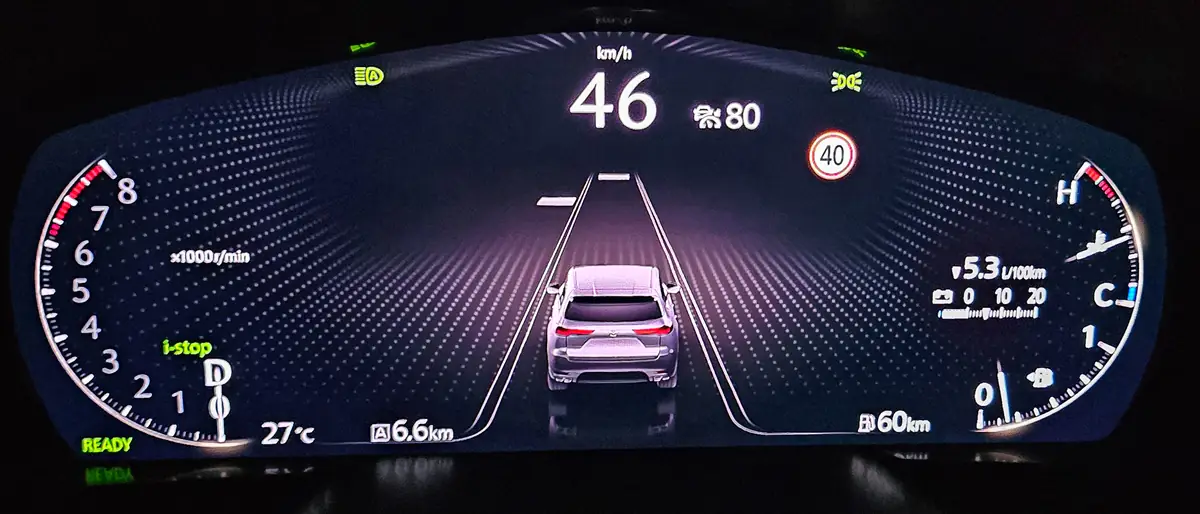
Of course, it’s impossible to drive in the city without frequent stops at traffic lights and navigating through traffic jams. It’s worth noting that the start-stop technology in the Mazda CX-60 works effectively and likely helps in such situations. In any case, while driving around Kyiv in a relaxed “not in a hurry” mode, I managed to achieve a fuel consumption of about 10 liters per 100 kilometers, which is quite impressive! I should also mention that I tested the CX-60 during the peak of August heat when temperatures reached 30 degrees Celsius or higher, so the air conditioning was working quite hard. In a similar driving mode, my less powerful Edge consumes around 13 liters of gasoline per 100 kilometers in heavy city traffic, and even 14 liters in the summer.
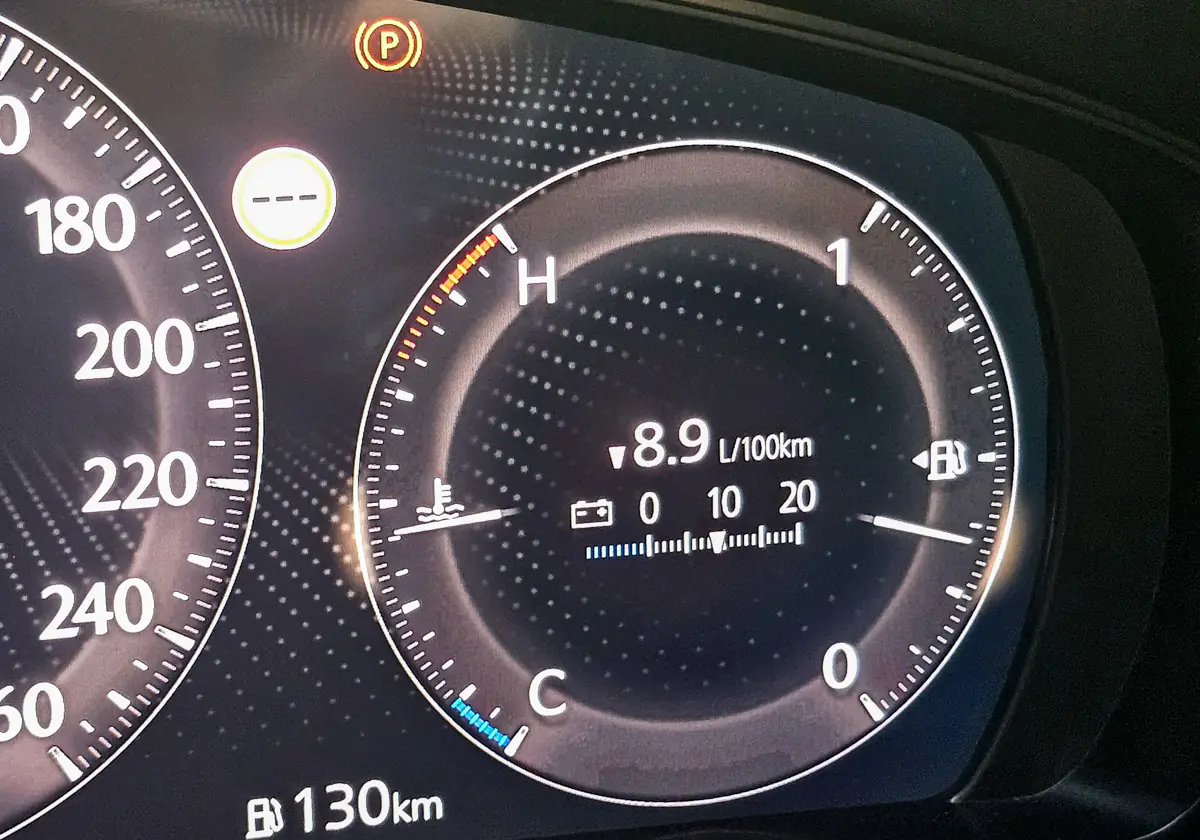
You can indeed see such fuel consumption figures on the CX-60’s dashboard, but to achieve them, you need to drive aggressively—pressing the accelerator at every opportunity, constantly overtaking, and launching from traffic lights. This is not a driving style I would recommend to anyone. However, during the test drive, I felt it was necessary to push the vehicle to see what it’s capable of, especially given its powerful engine. After all, testing wouldn’t be meaningful otherwise. I don’t believe that the target audience for such vehicles buys them for a relaxed driving experience.
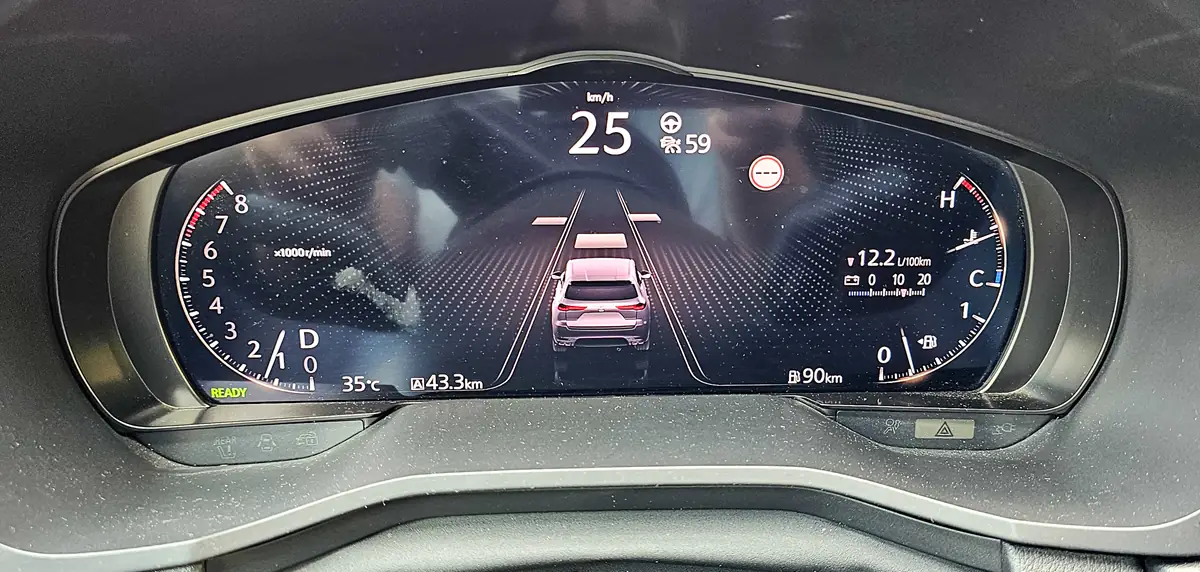
Conclusions
Mazda CX-60 Premium-Sport is indeed an impressive vehicle. This doesn’t mean it’s perfect; such a thing is probably impossible. The car’s main feature is that it delivers vivid emotions through its expressive design, sporty suspension, and impressive dynamics. The MHEV powertrain is truly excellent, providing a wide range of driving modes depending on the owner’s current mood and purpose—ranging from super-economical, calm driving with low fuel consumption to a “rocket” mode that still proves to be quite efficient. It’s simply incredible. I also want to highlight the more than adequate smooth operation of the 8-speed automatic transmission.
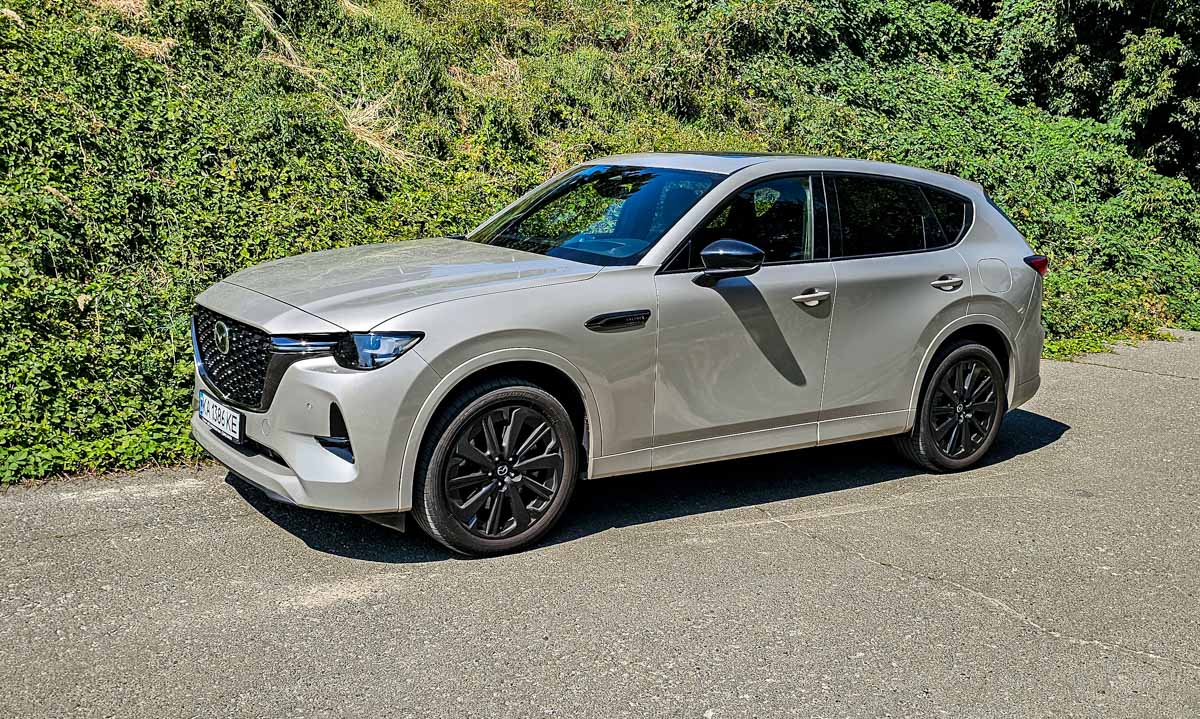
Despite the “Premium-Sport” designation, in my subjective opinion, this vehicle doesn’t feel premium enough for its price. This is mainly due to the low quality of the interior materials and inadequate sound insulation, which falls short of what you would expect from a premium class. However, there’s an abundance of sporty elements, and perhaps buyers should pay a premium for that. This raises a crucial question for prospective owners: does the car meet your desires and needs, or would it be better to choose one of the cheaper CX-60 trims that offer a more reasonable and balanced price?

Liked:
- Exterior design
- Headlights and taillights
- Operation of all automatic, auxiliary systems and assistants, driver recognition and personalization of settings
- Sound quality of the BOSE audio system
- Large trunk
- Overall comfortable, convenient and stylish interior
- Engine and automatic transmission – a combination of dynamics and efficiency
- Rigid sports suspension
Cons:
- Rigid sports suspension (yes, I consider it both a plus and a minus of the car, your choice) and the absence of a pneumatic suspension system
- Noise insulation of the cabin
- Plastic in the cabin looks and feels cheap
- Very initial level of ambient interior lighting
- We would like to have a little more space for rear passengers
- Lack of a mobile application
